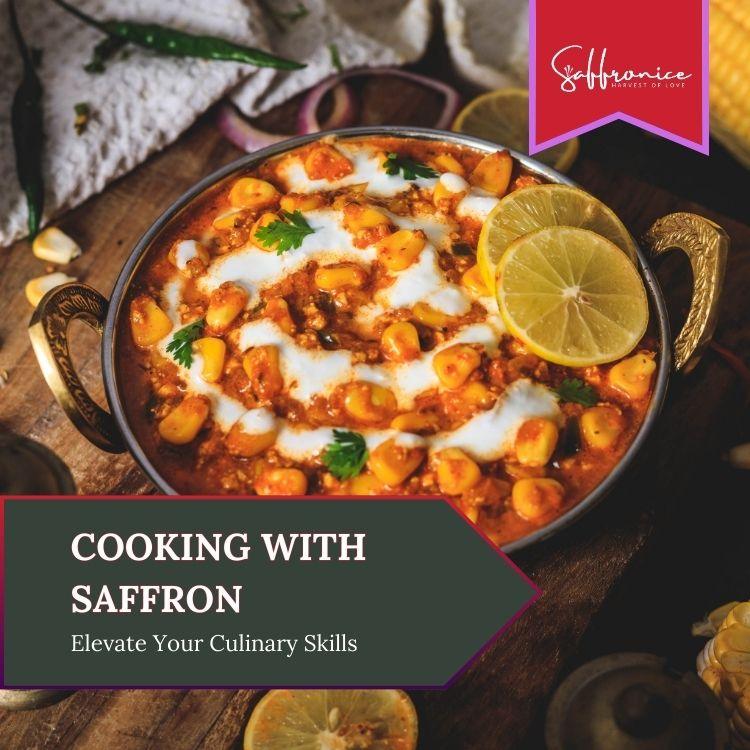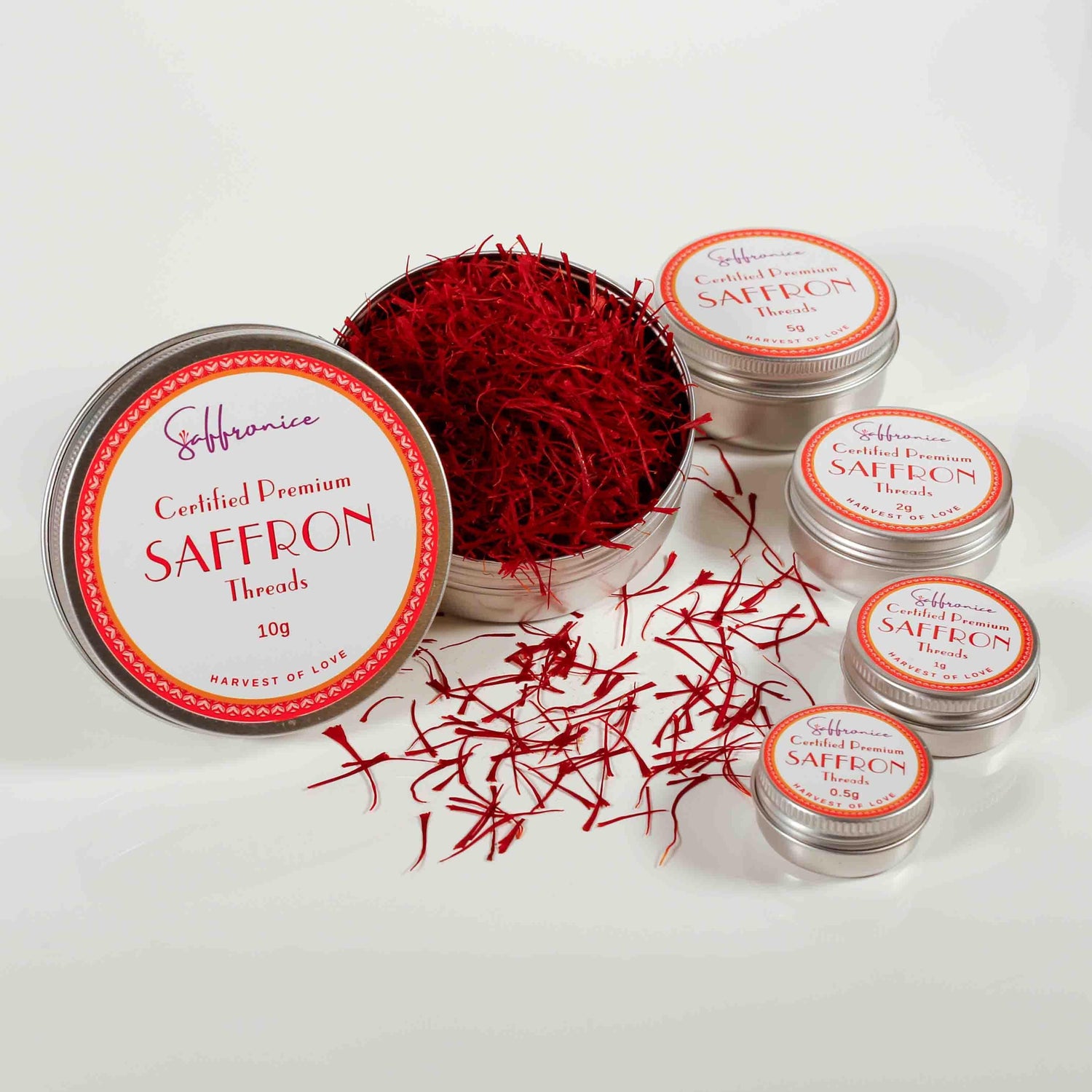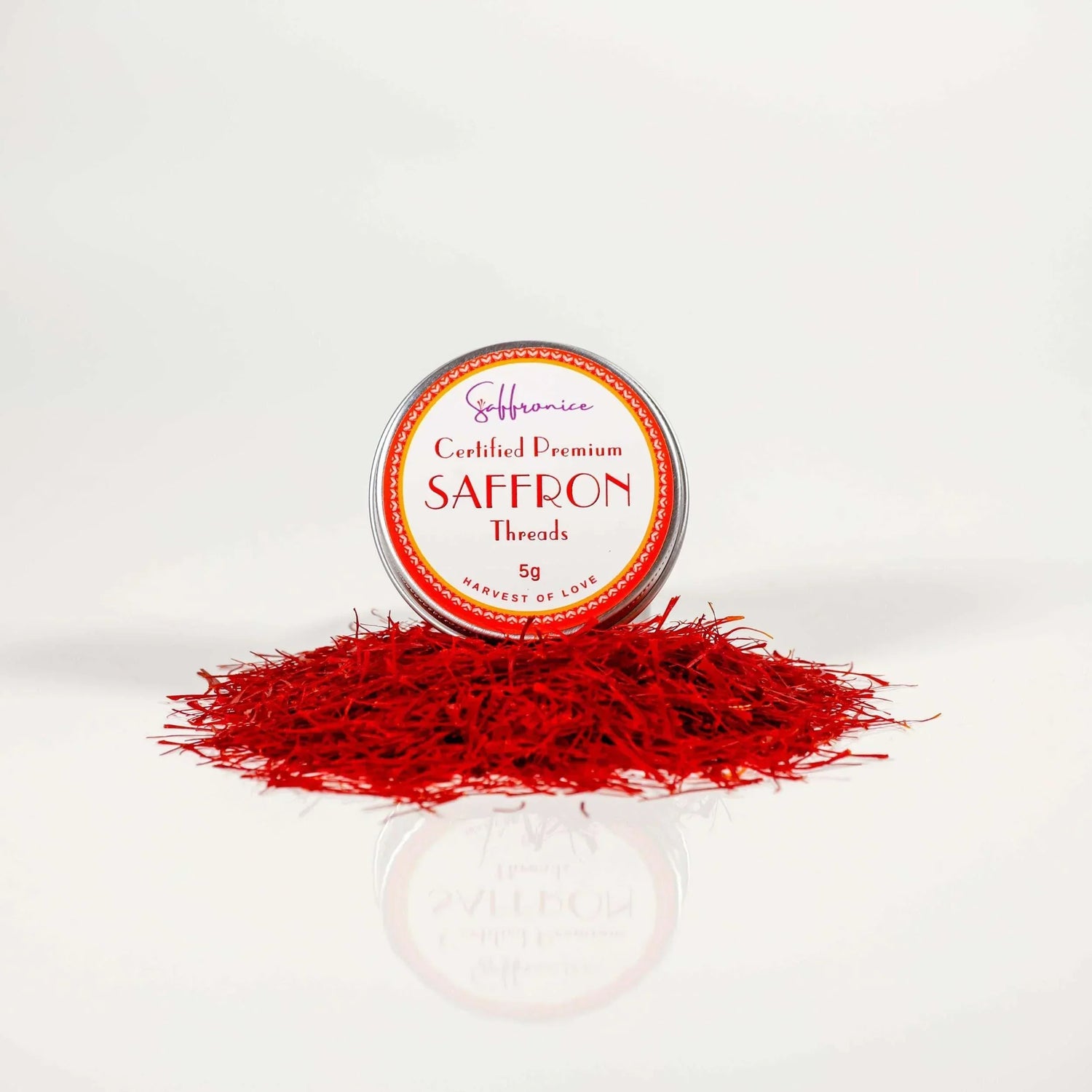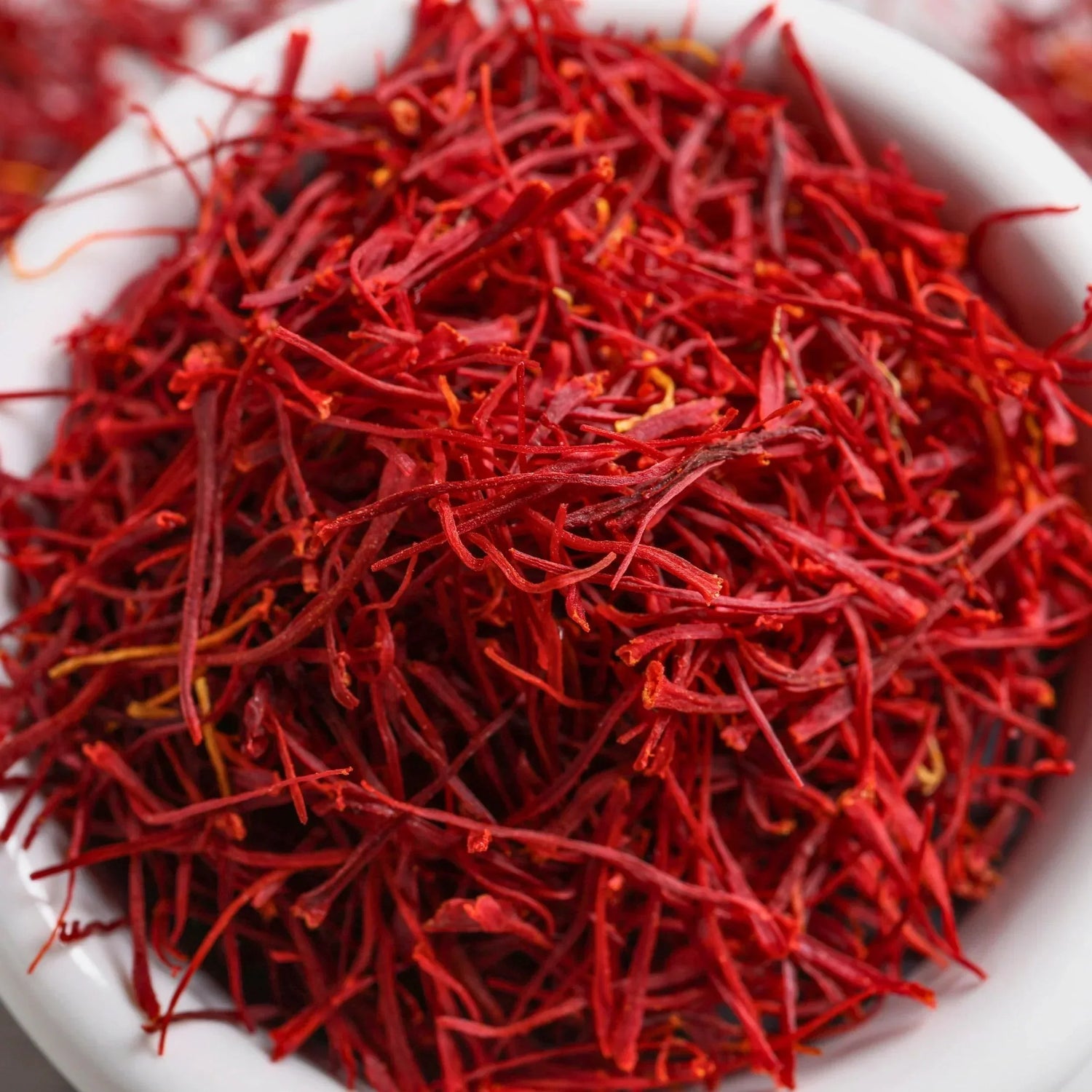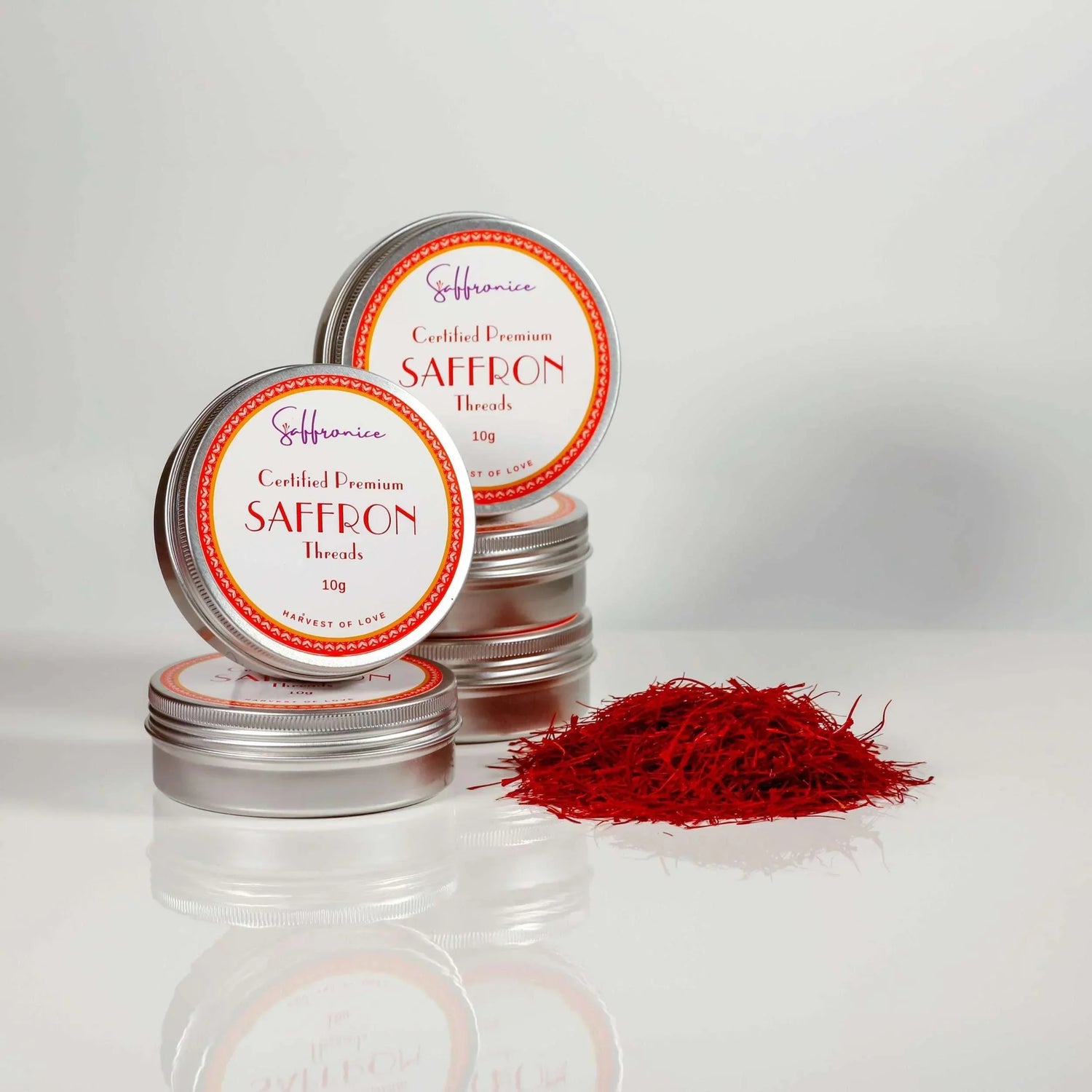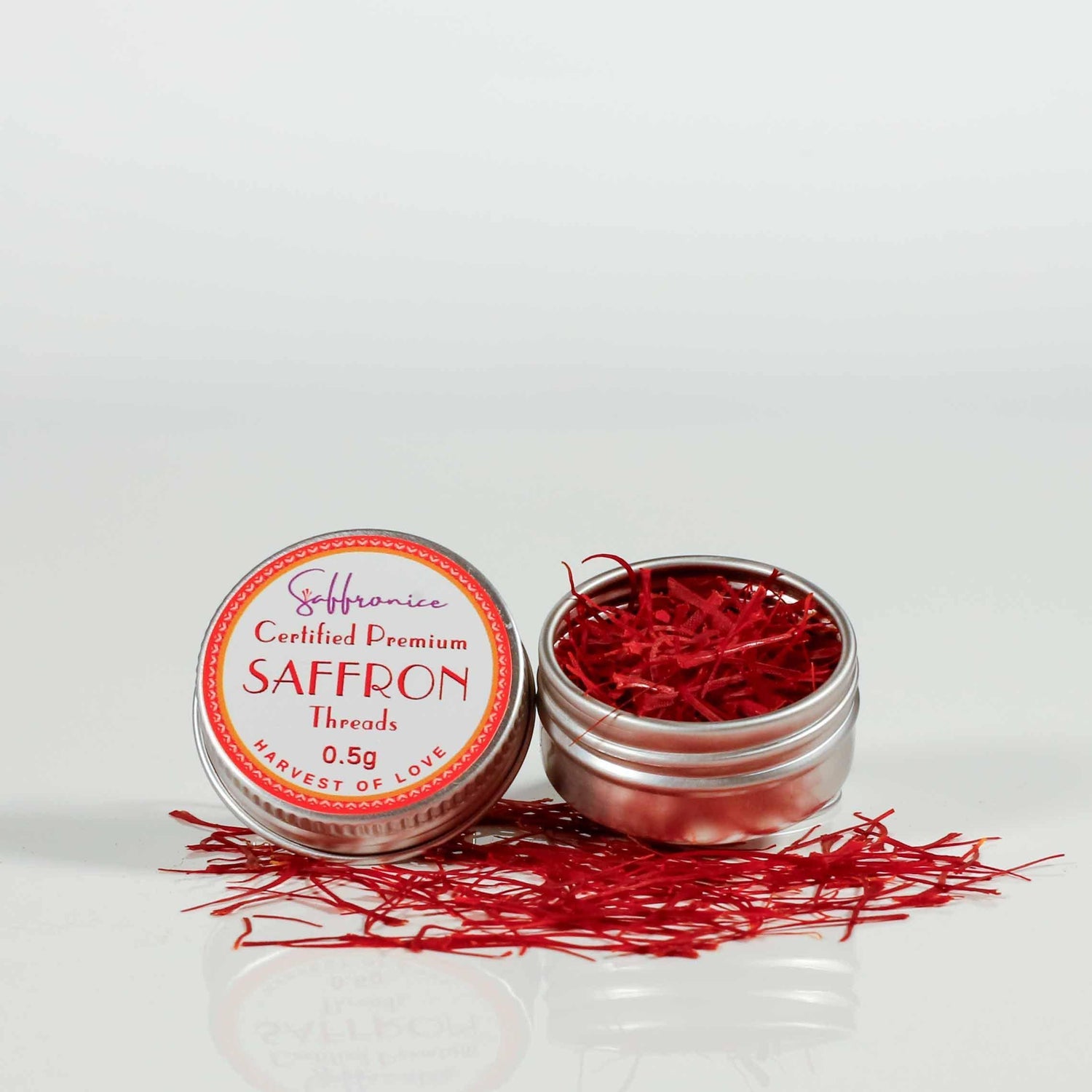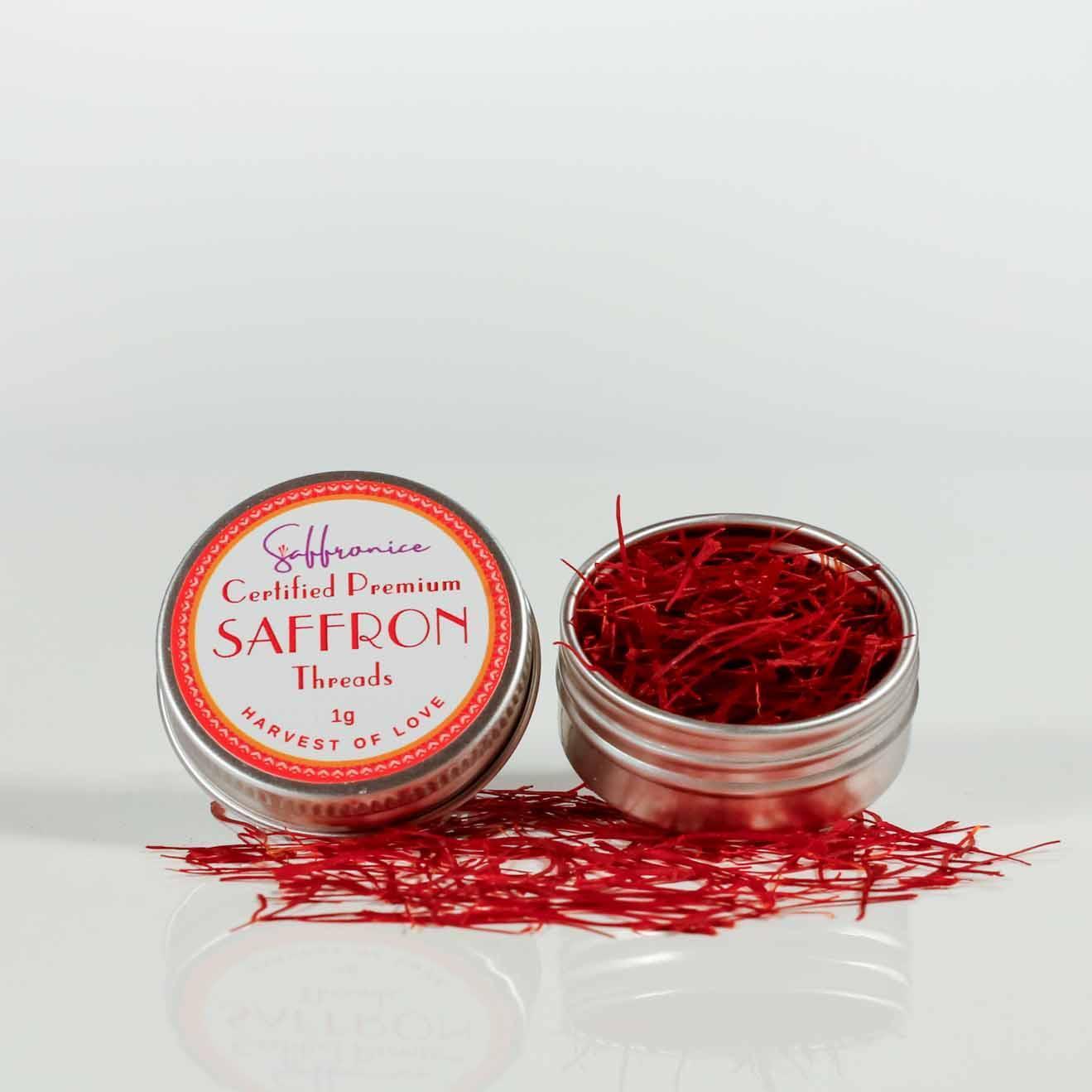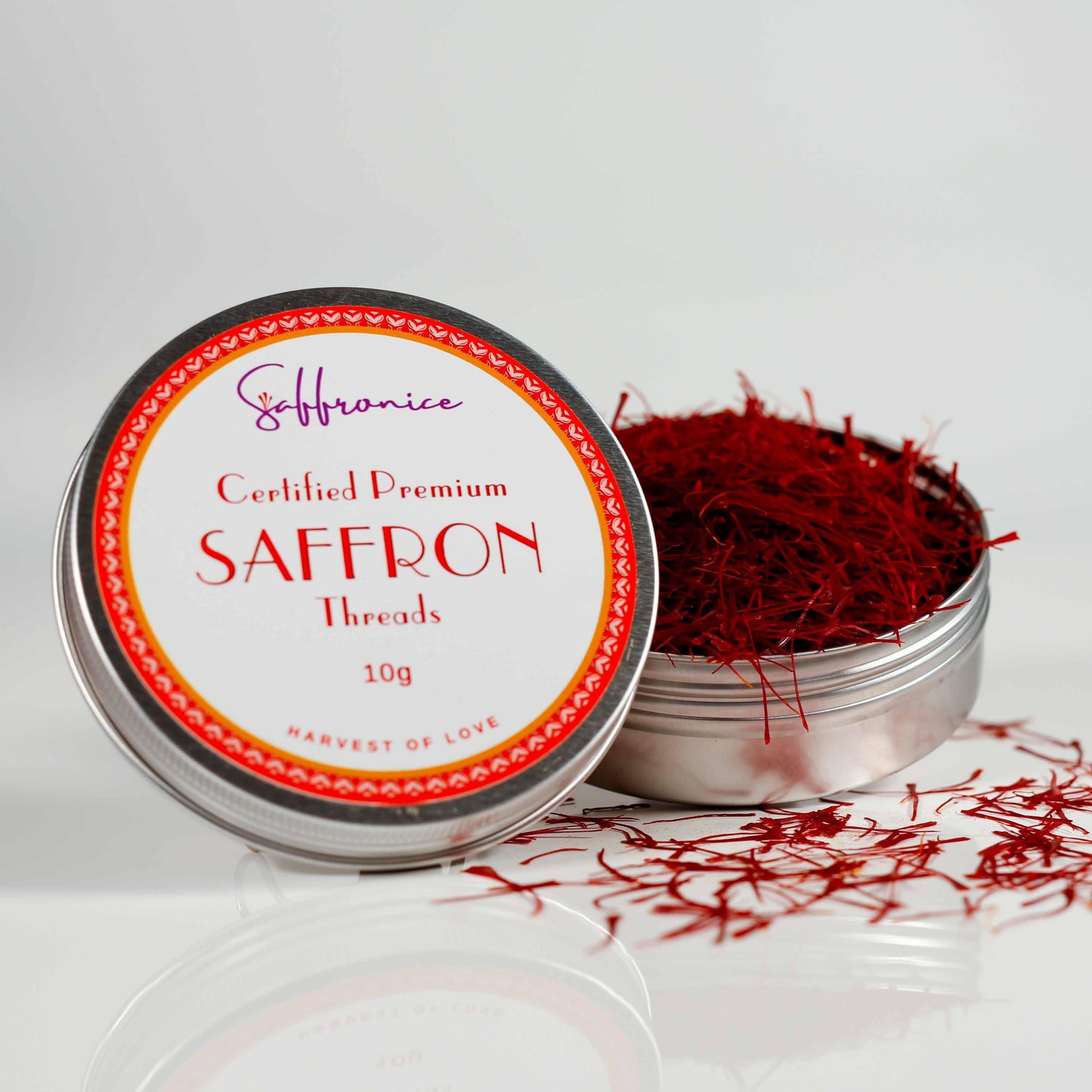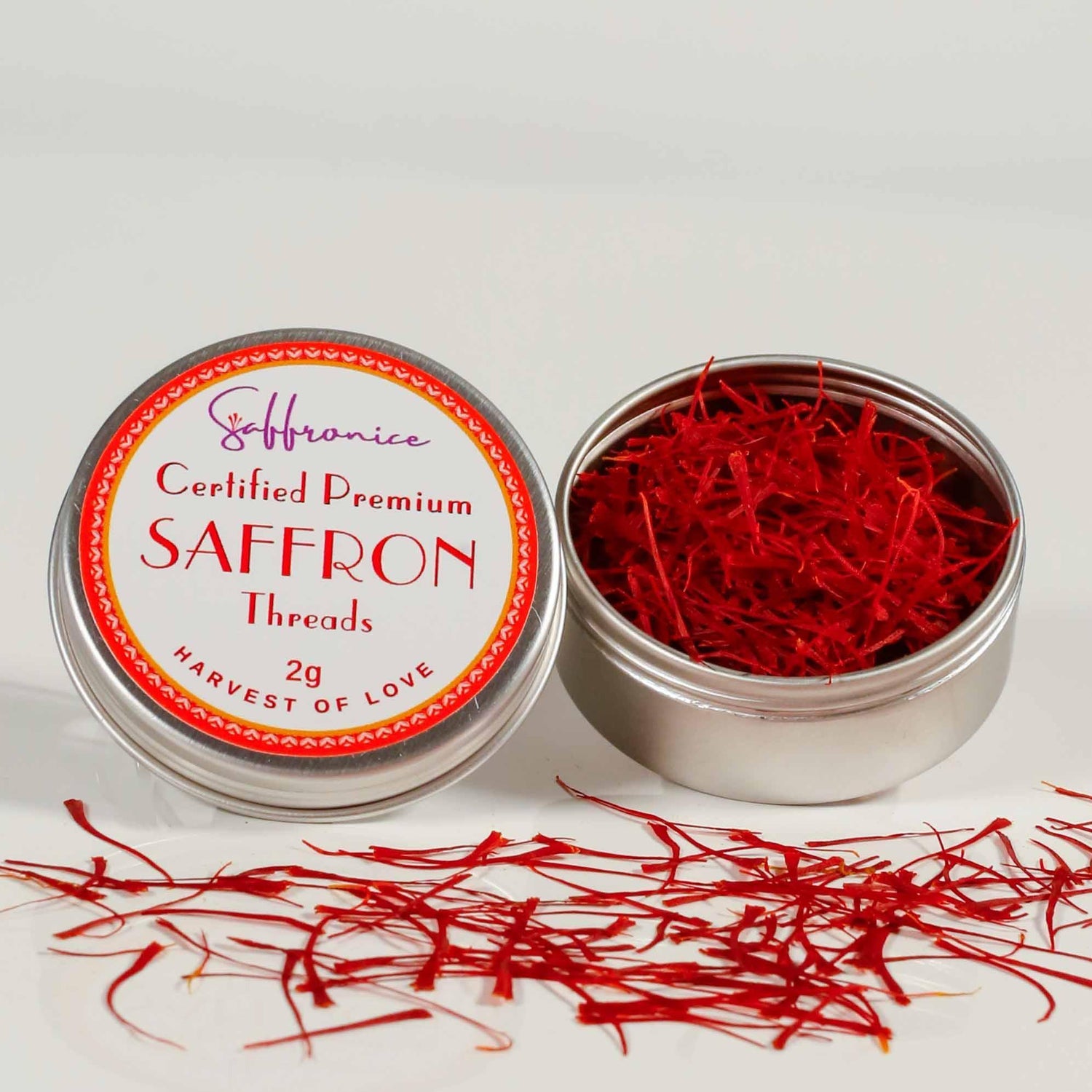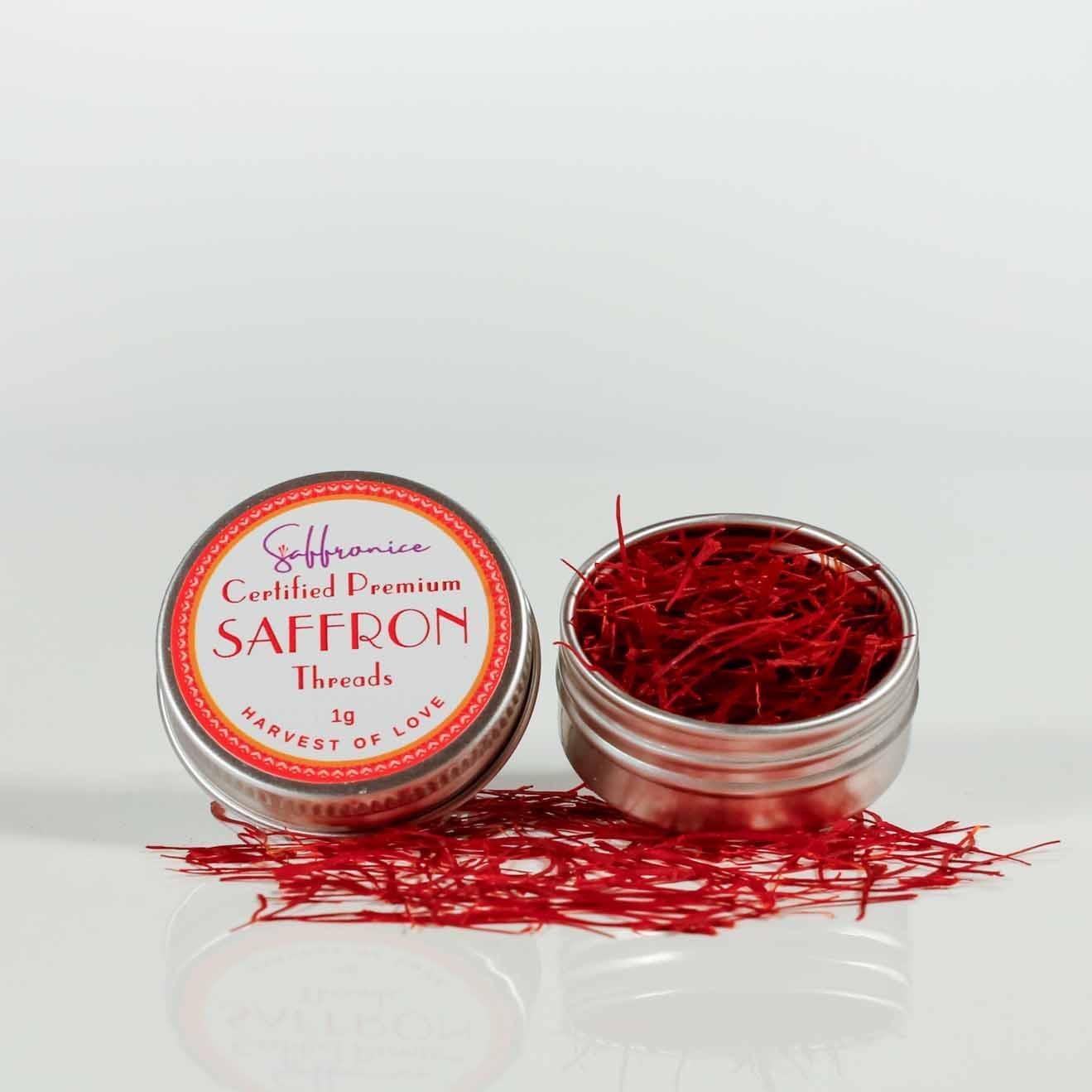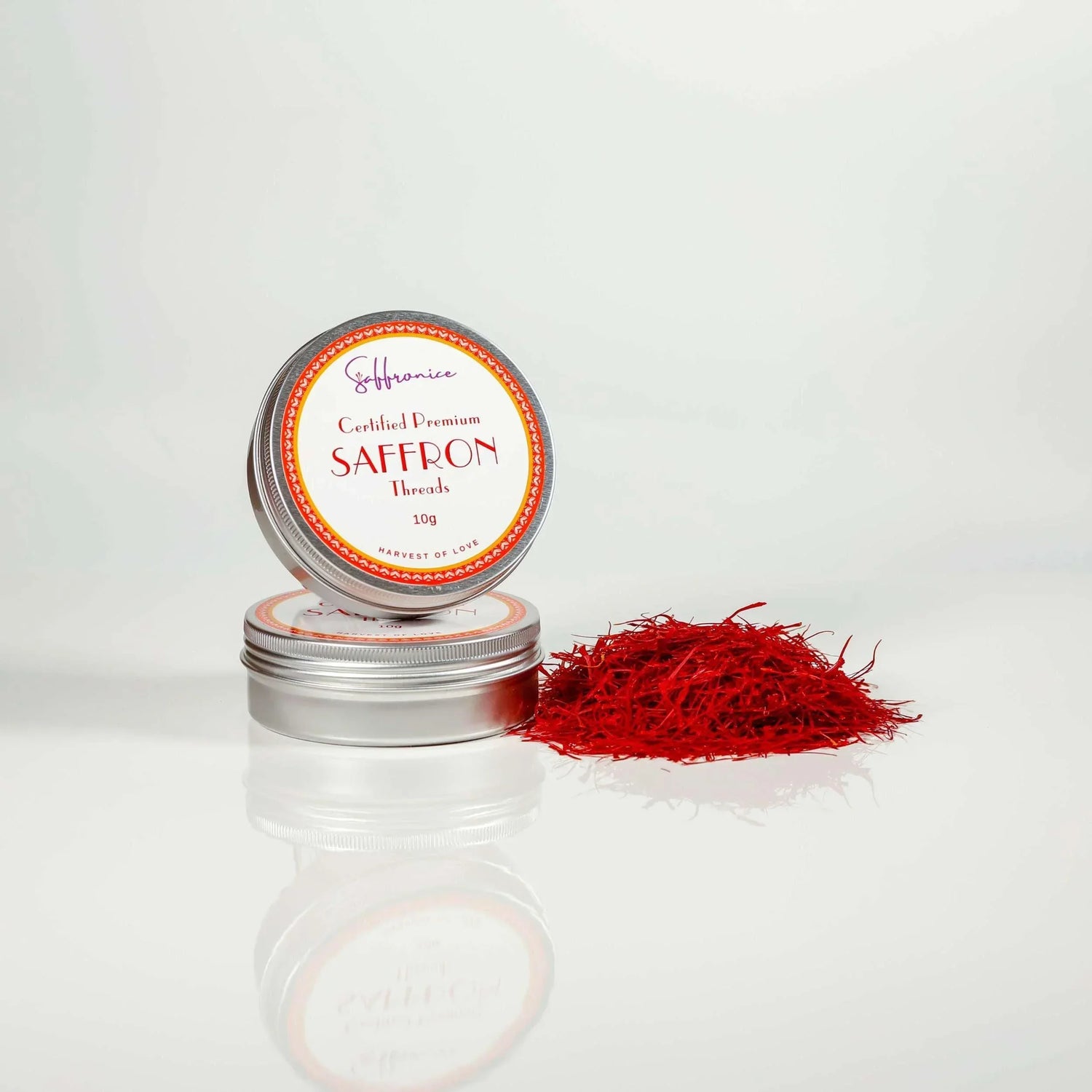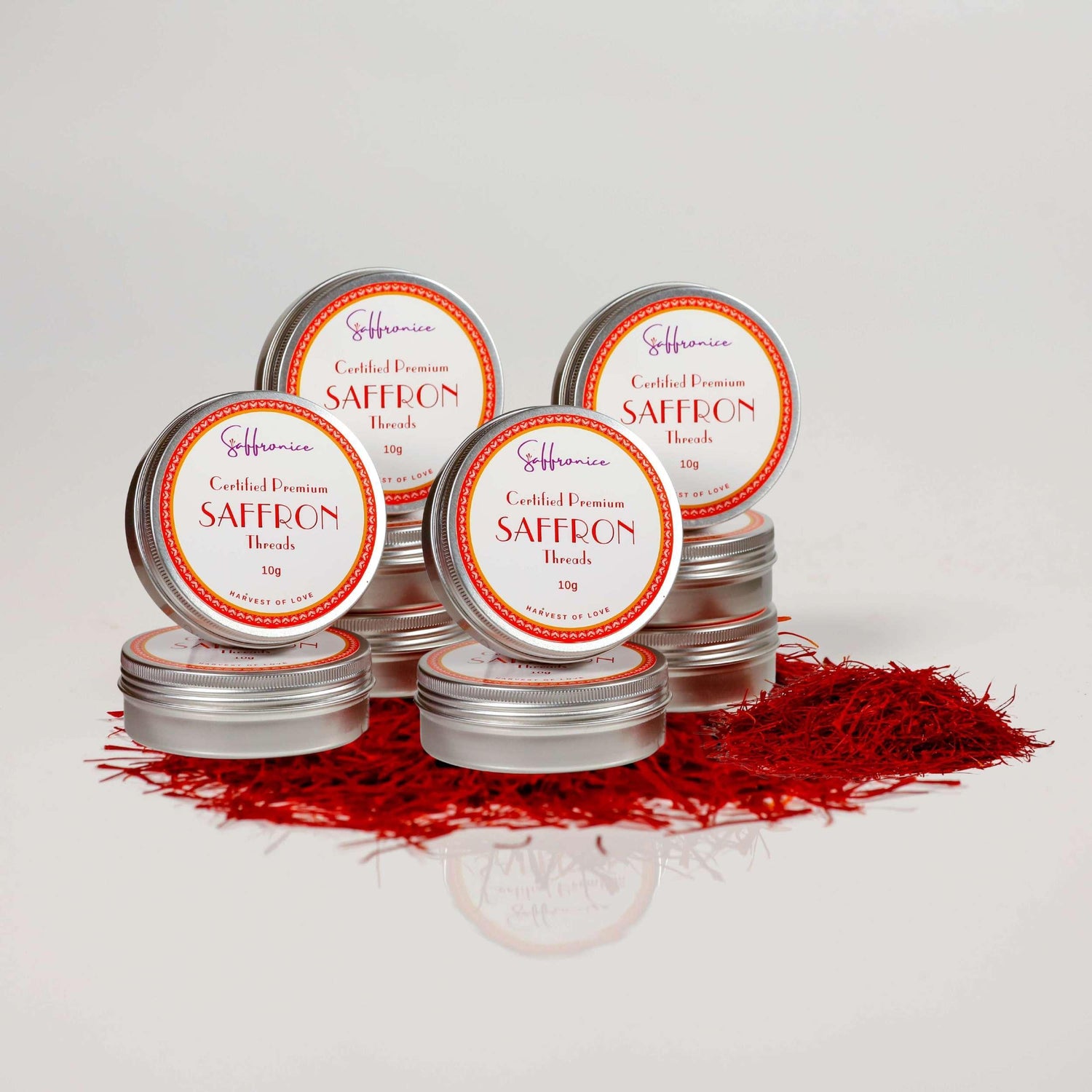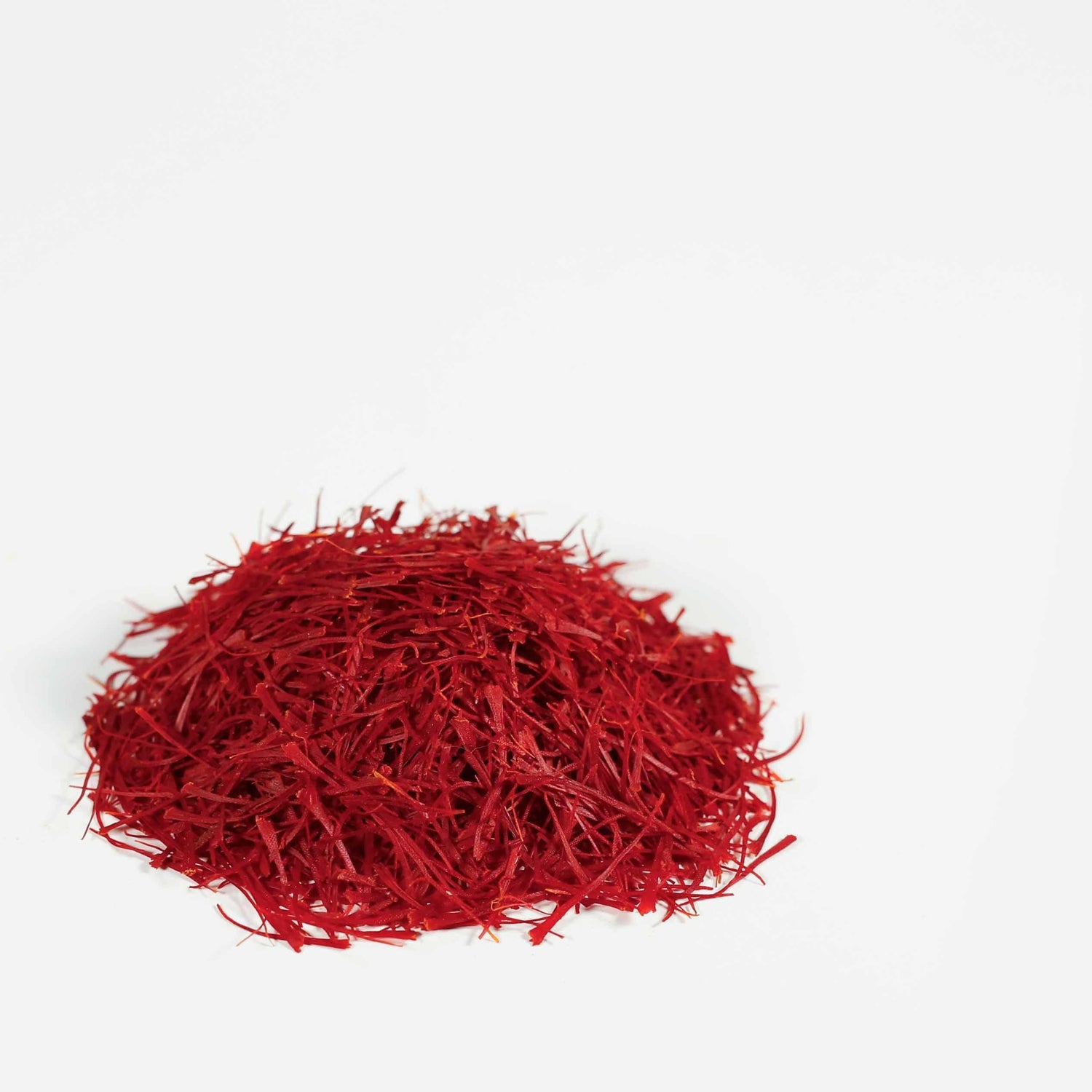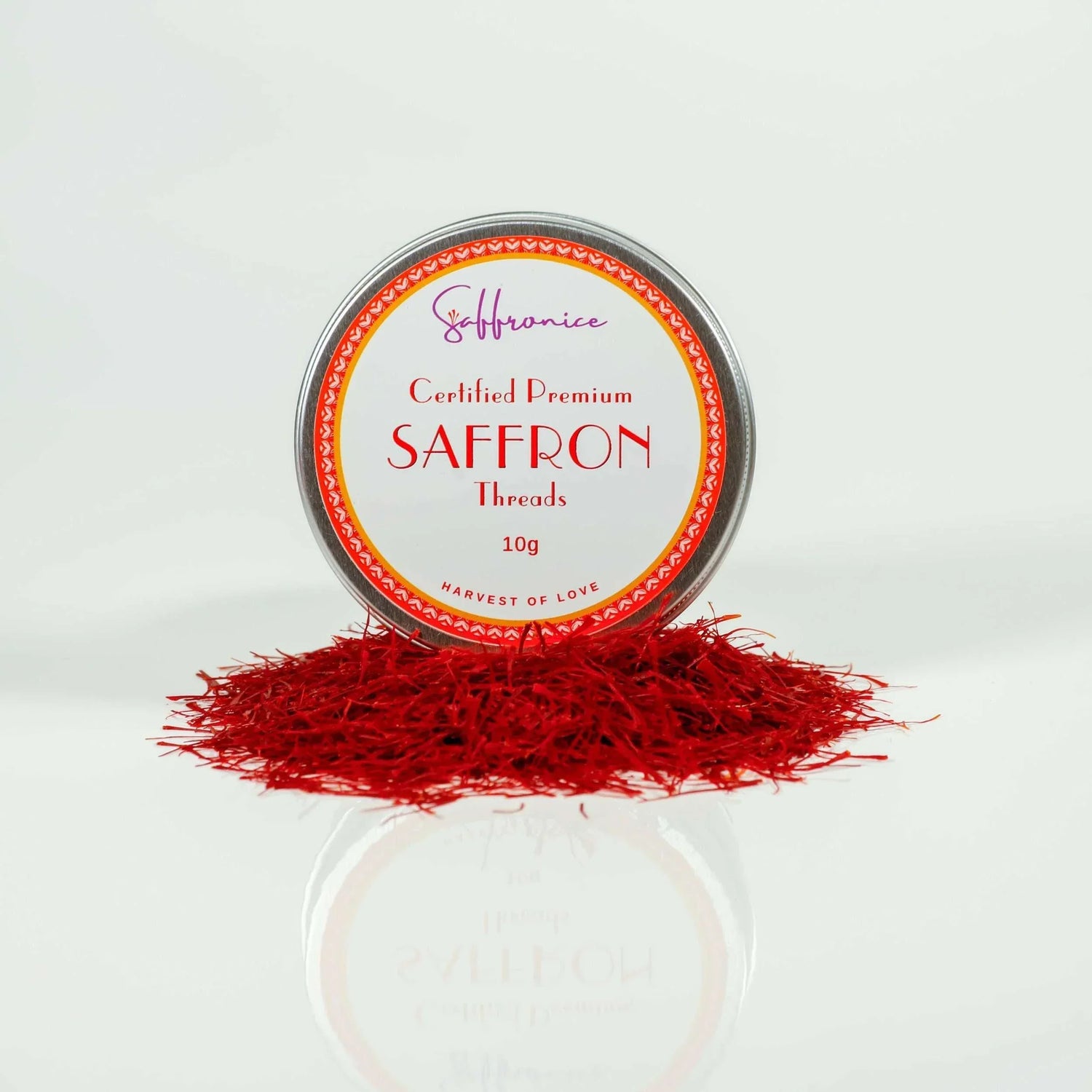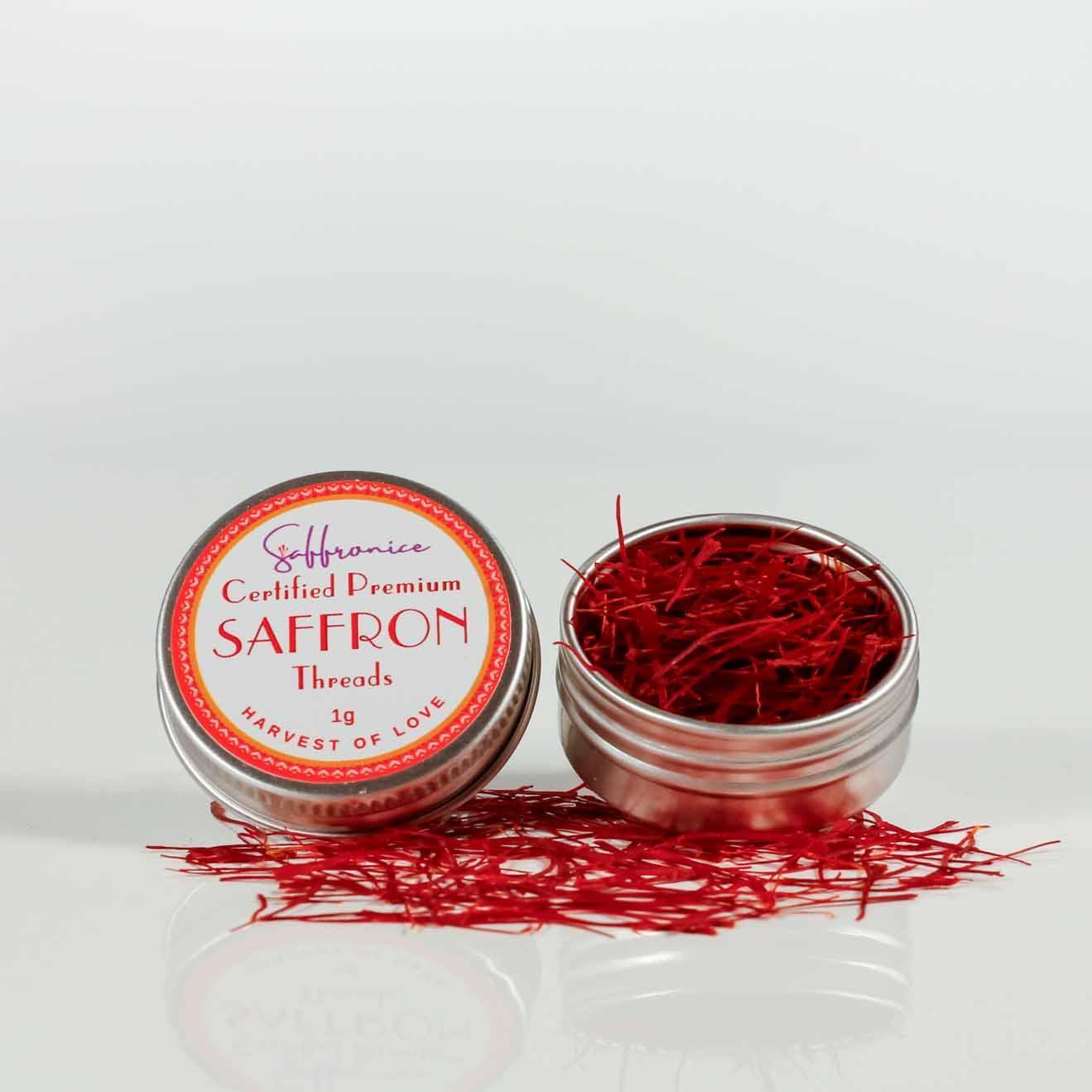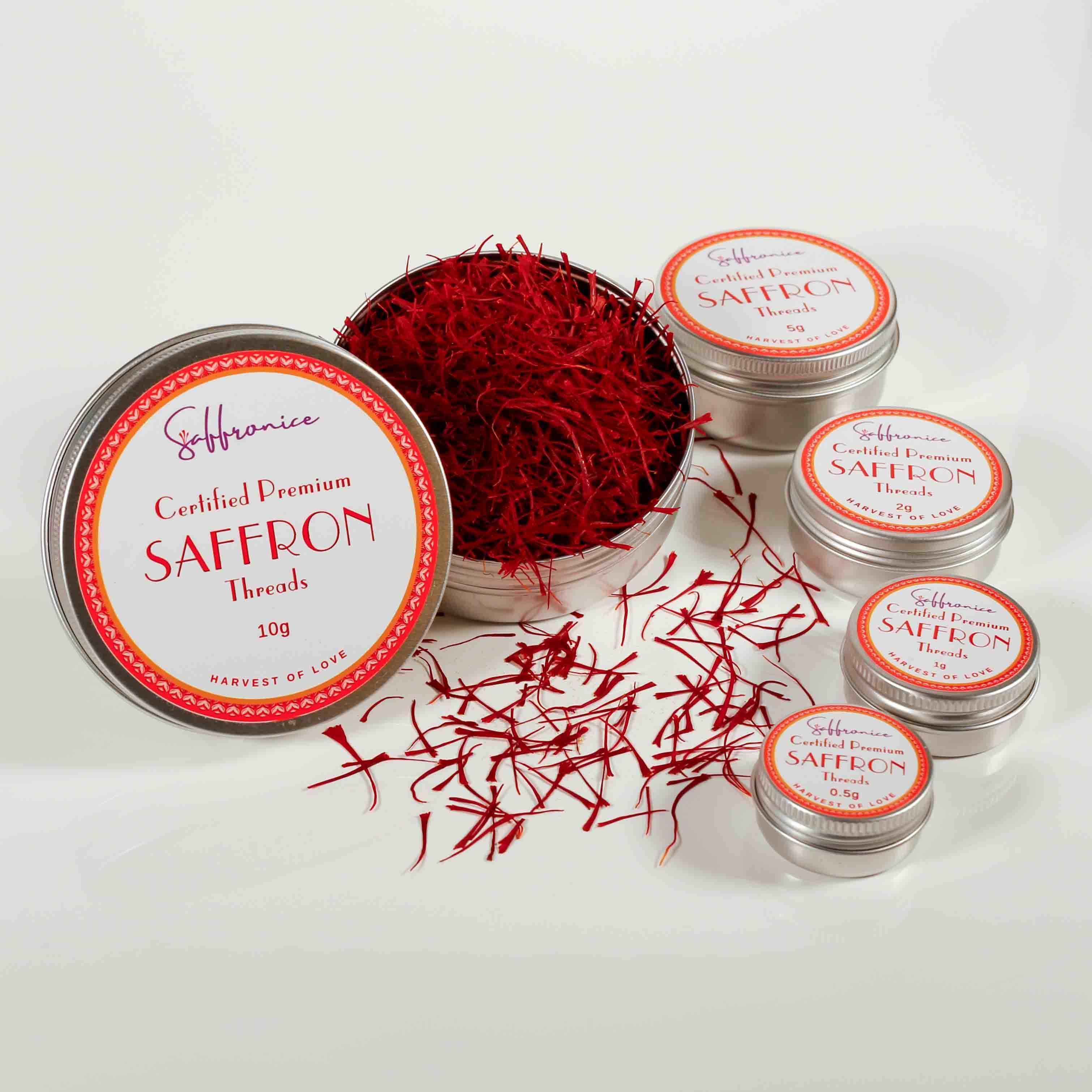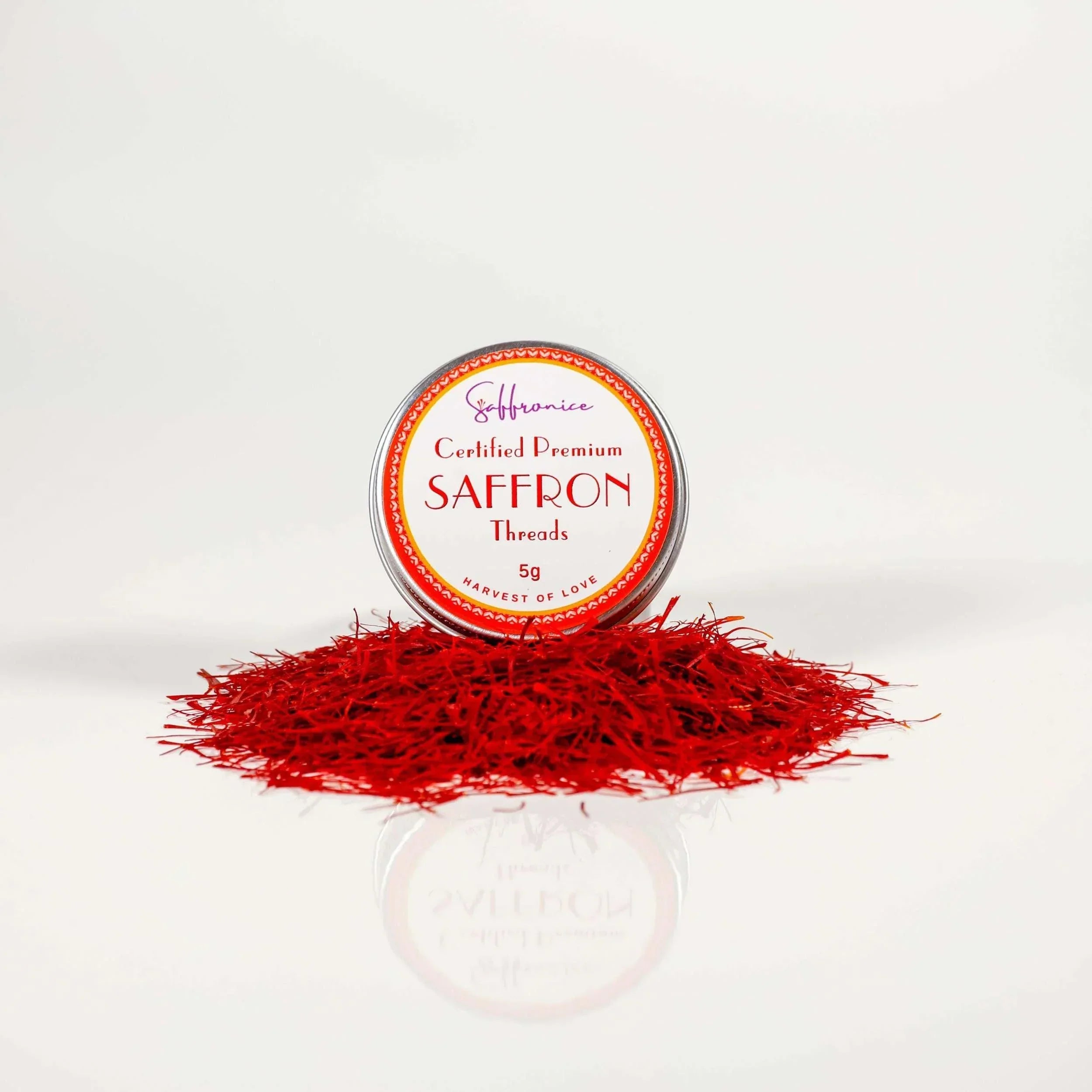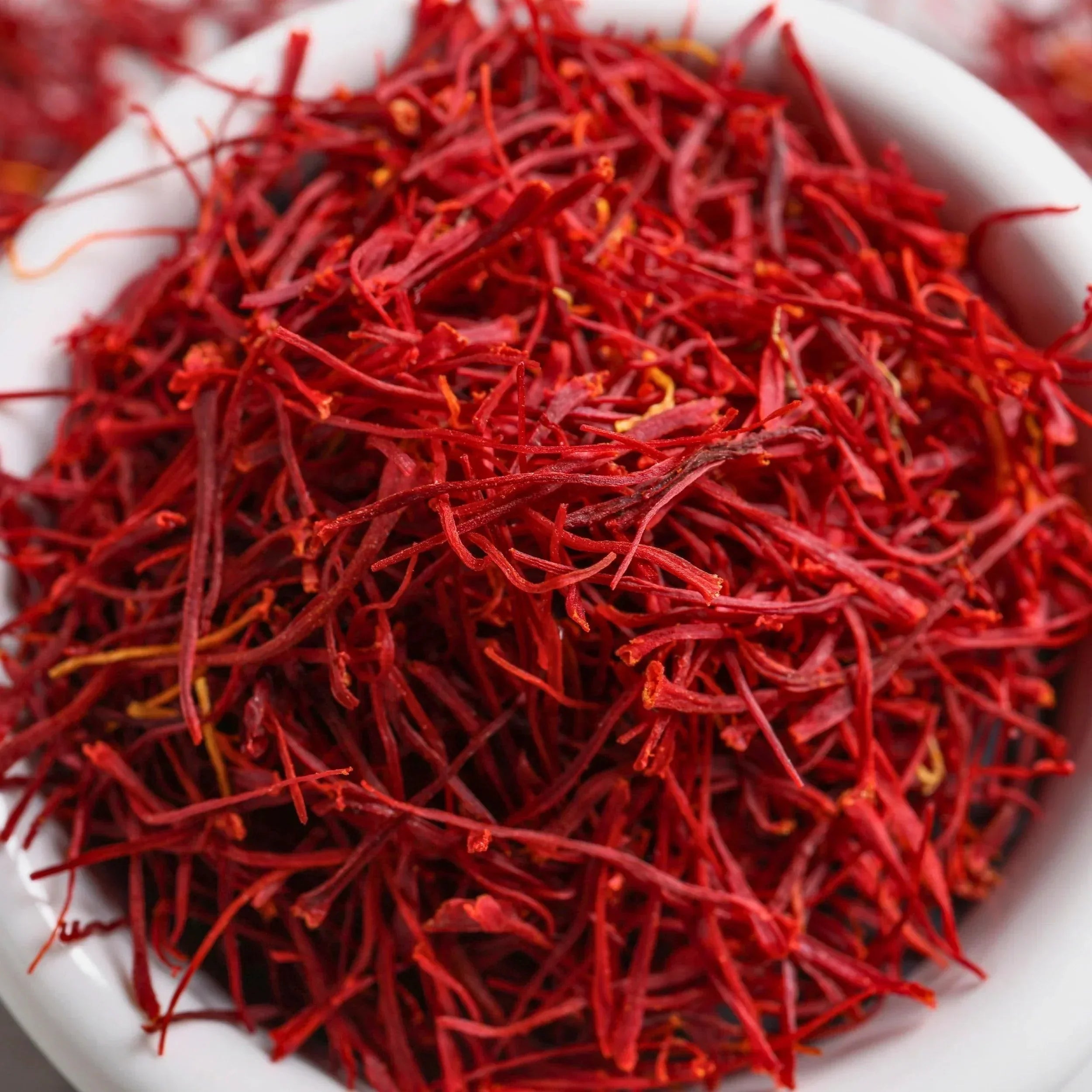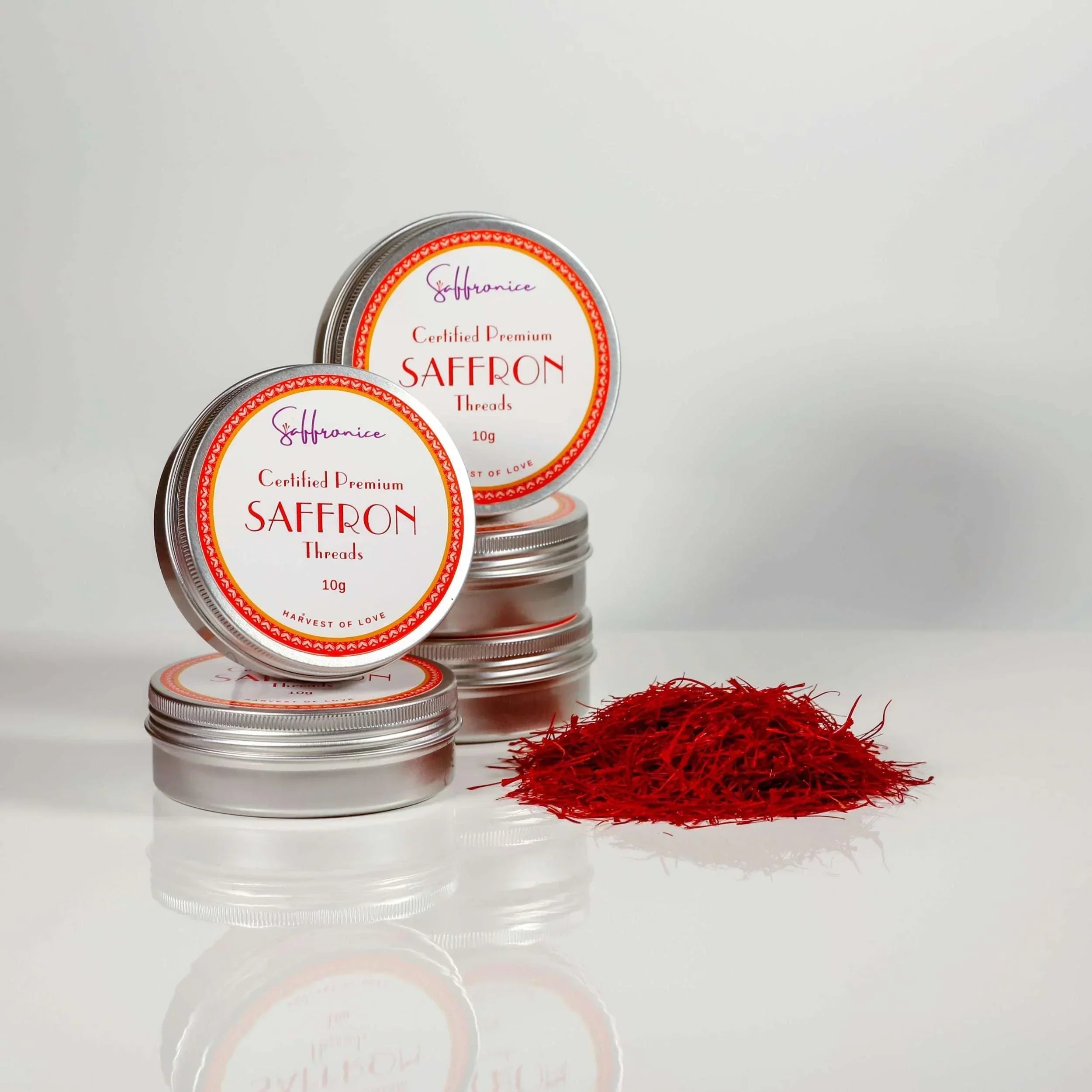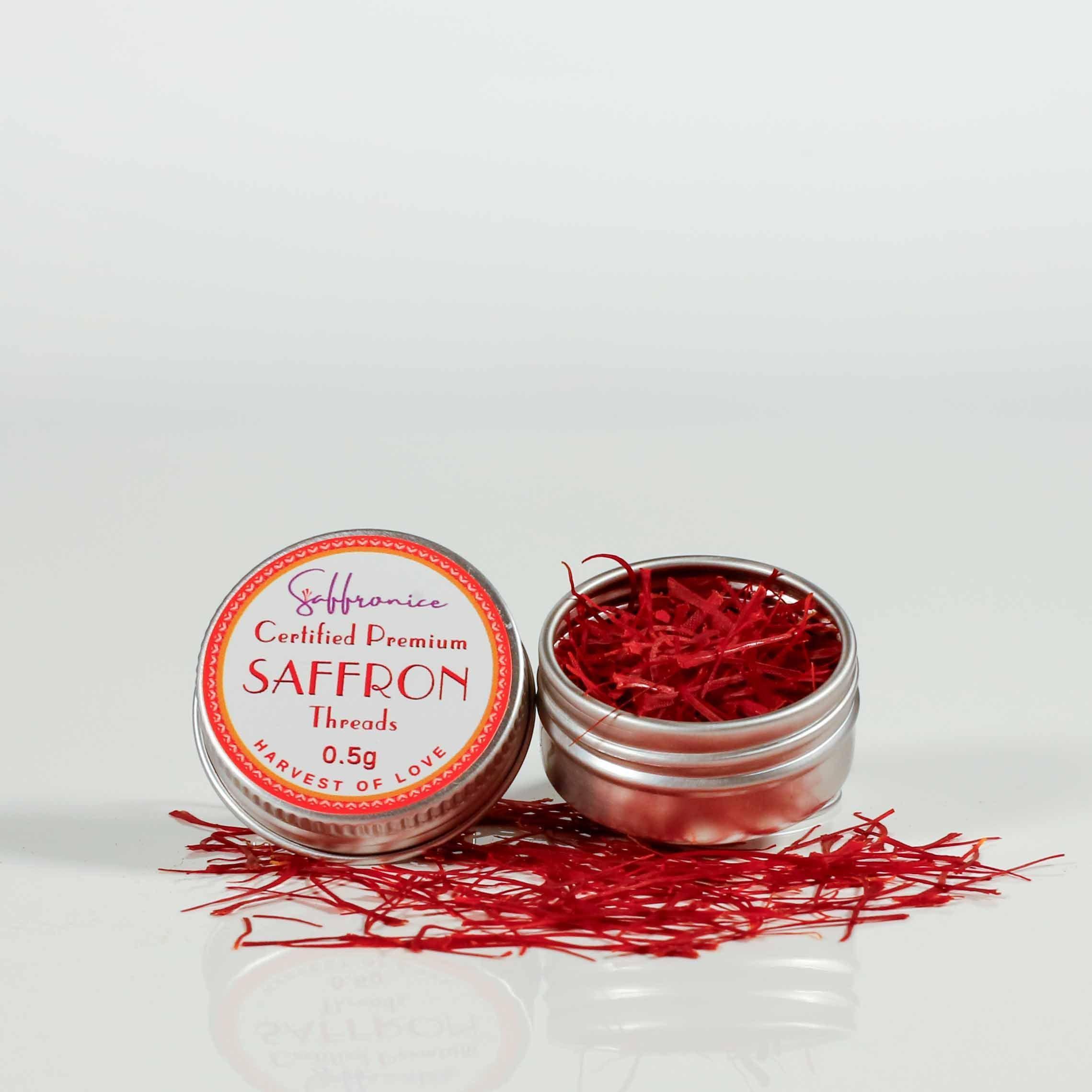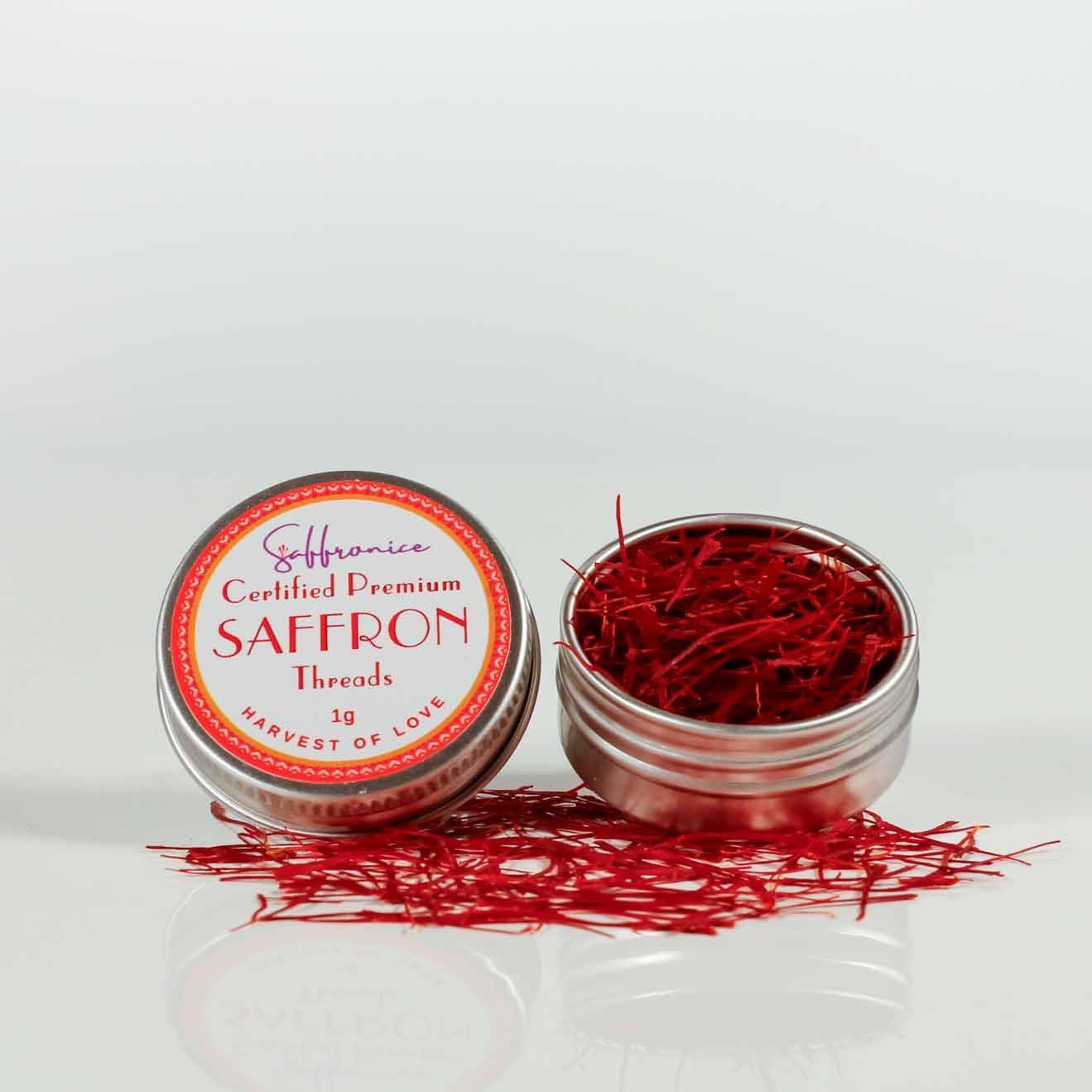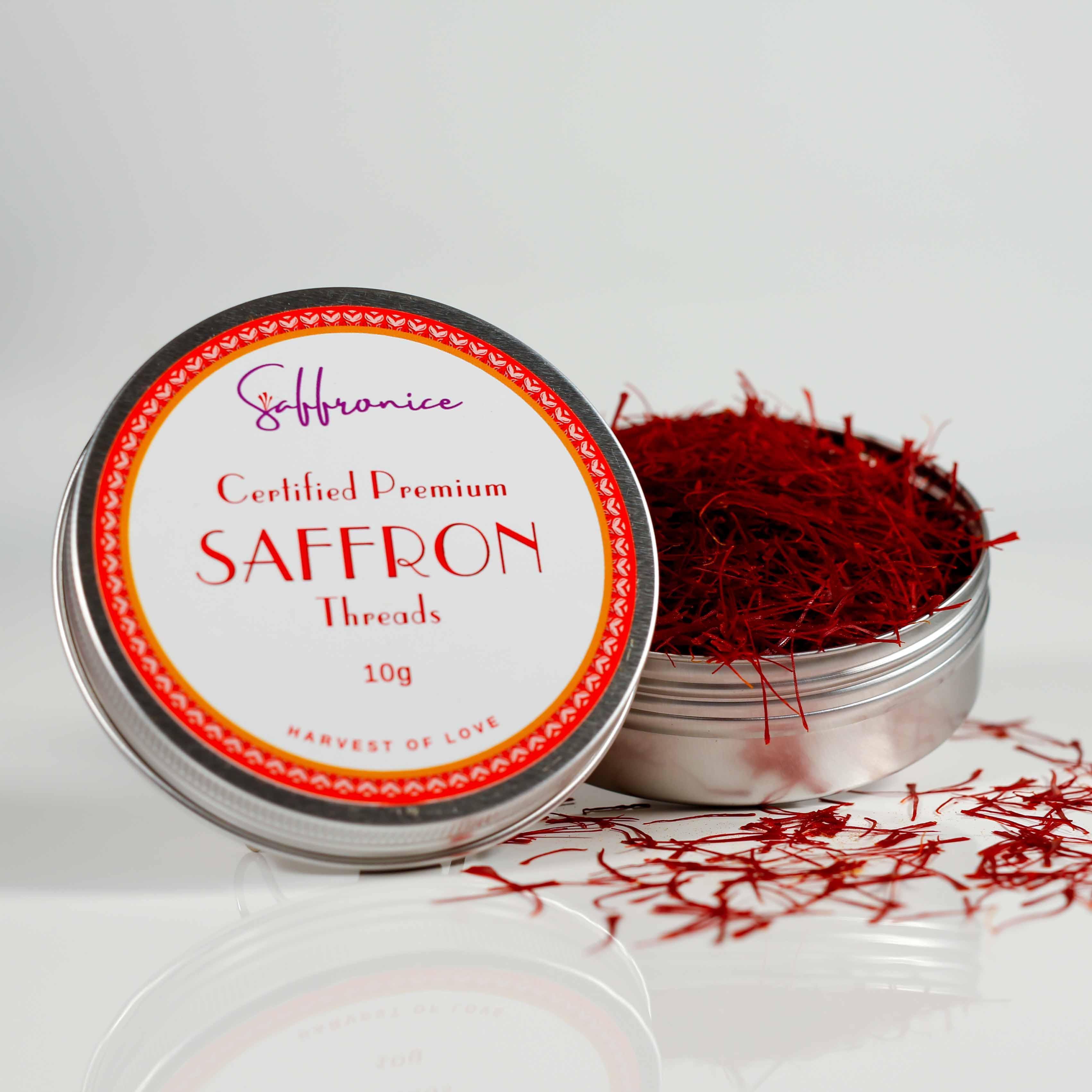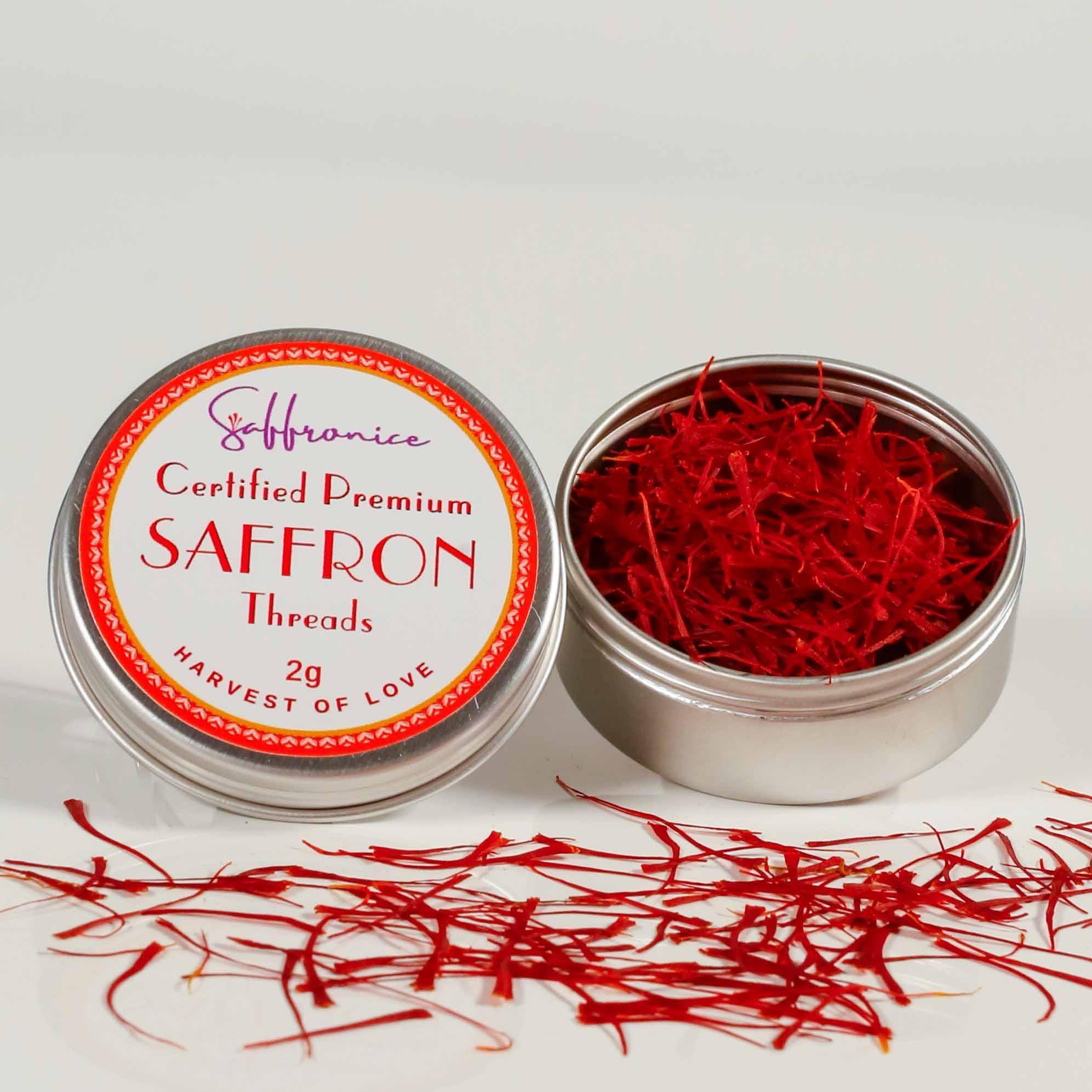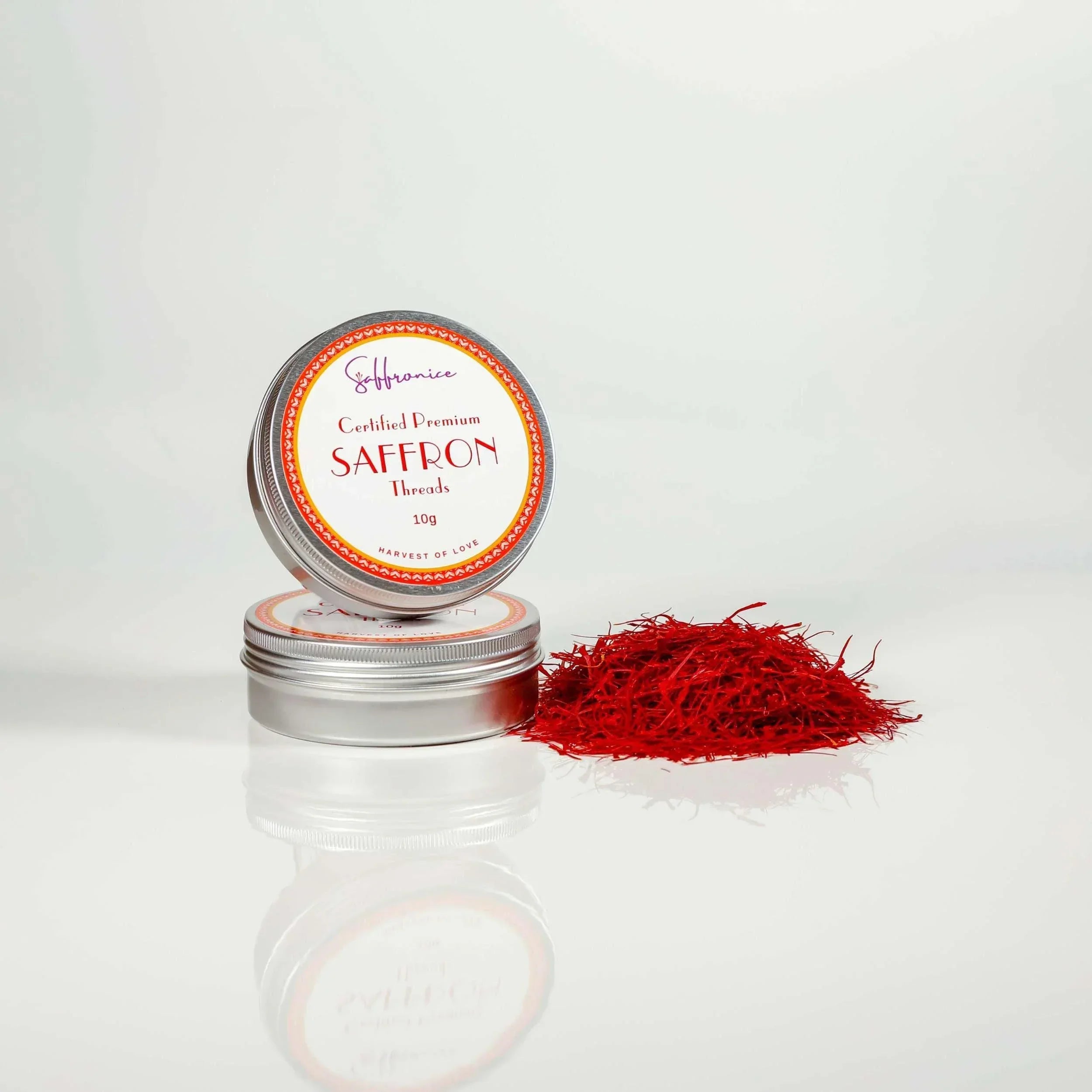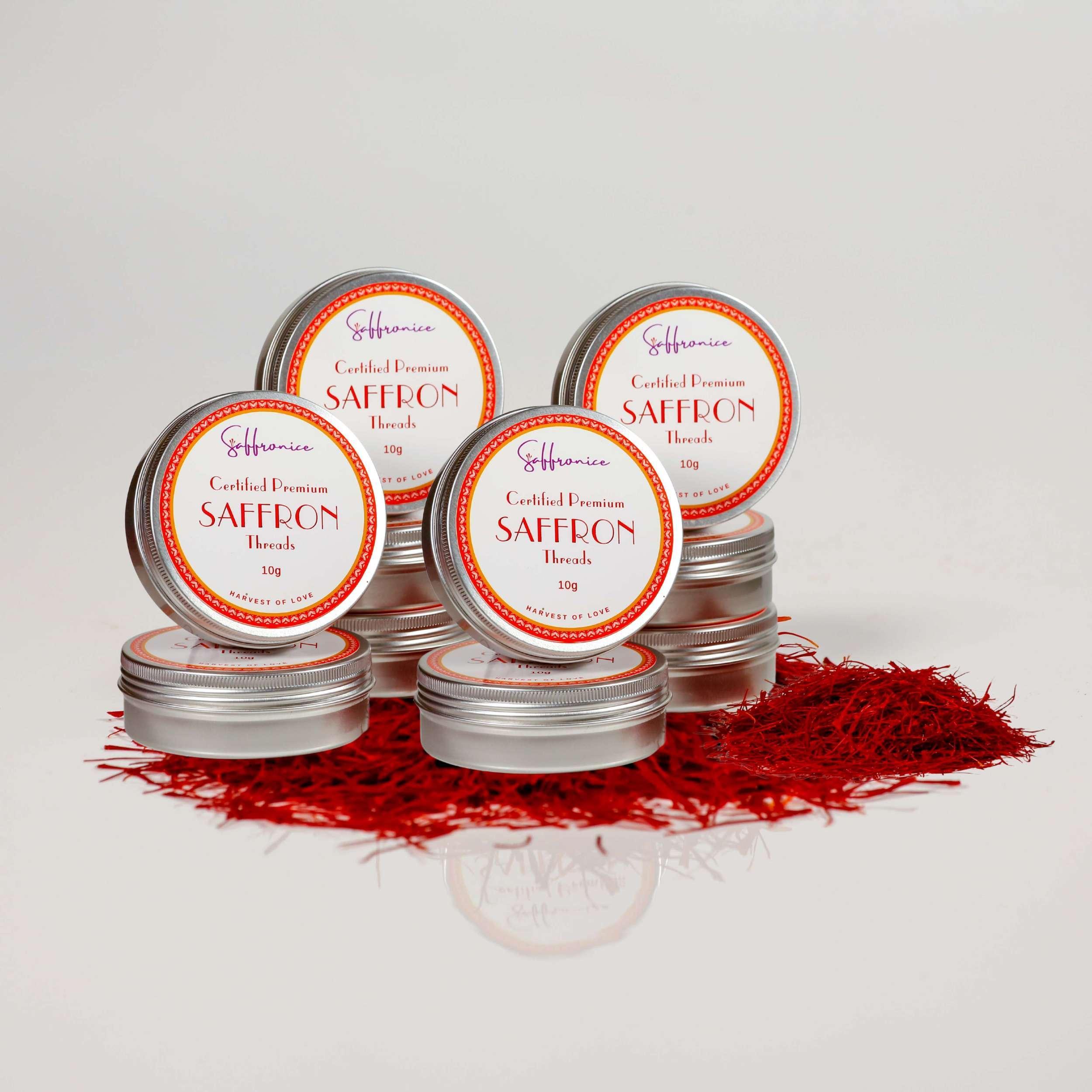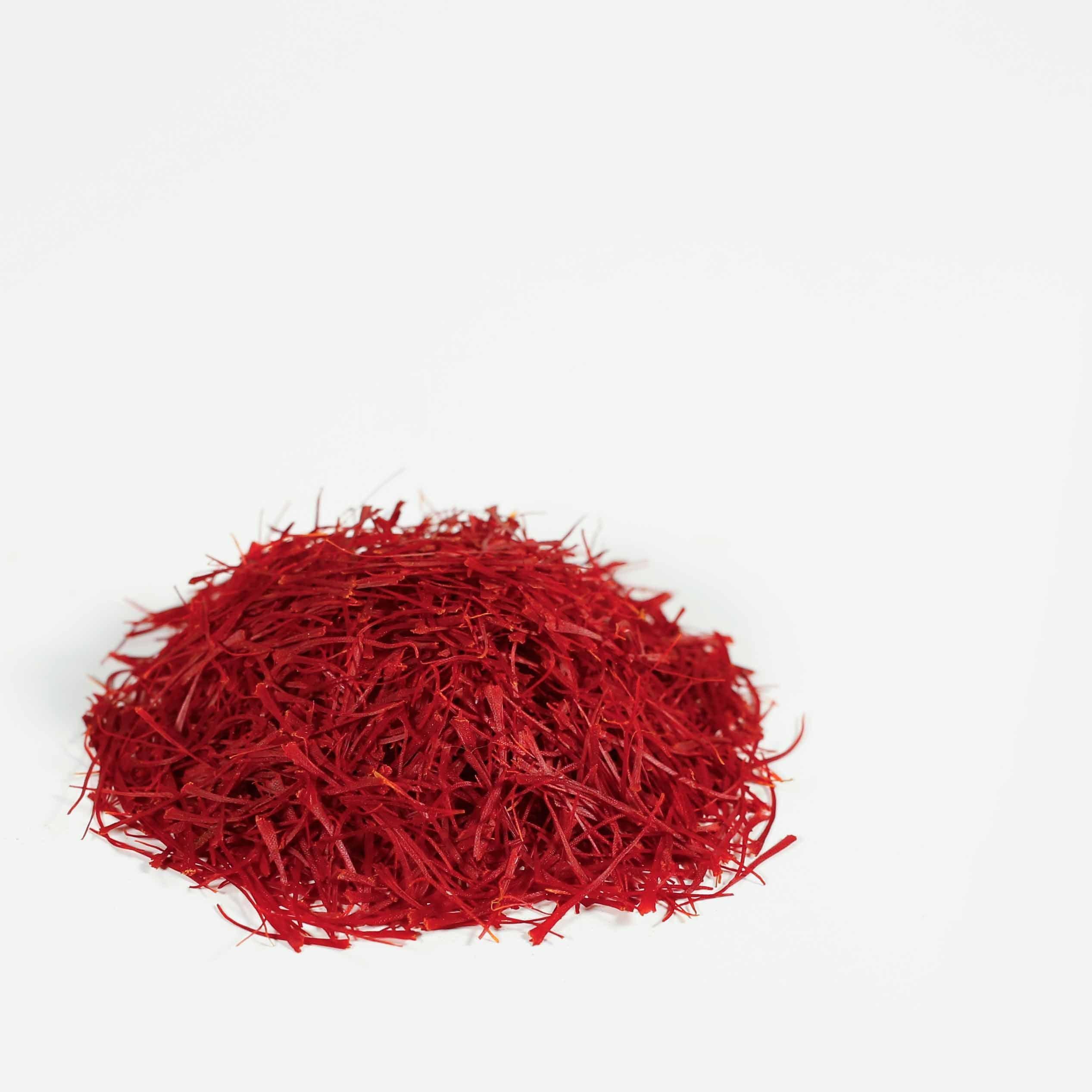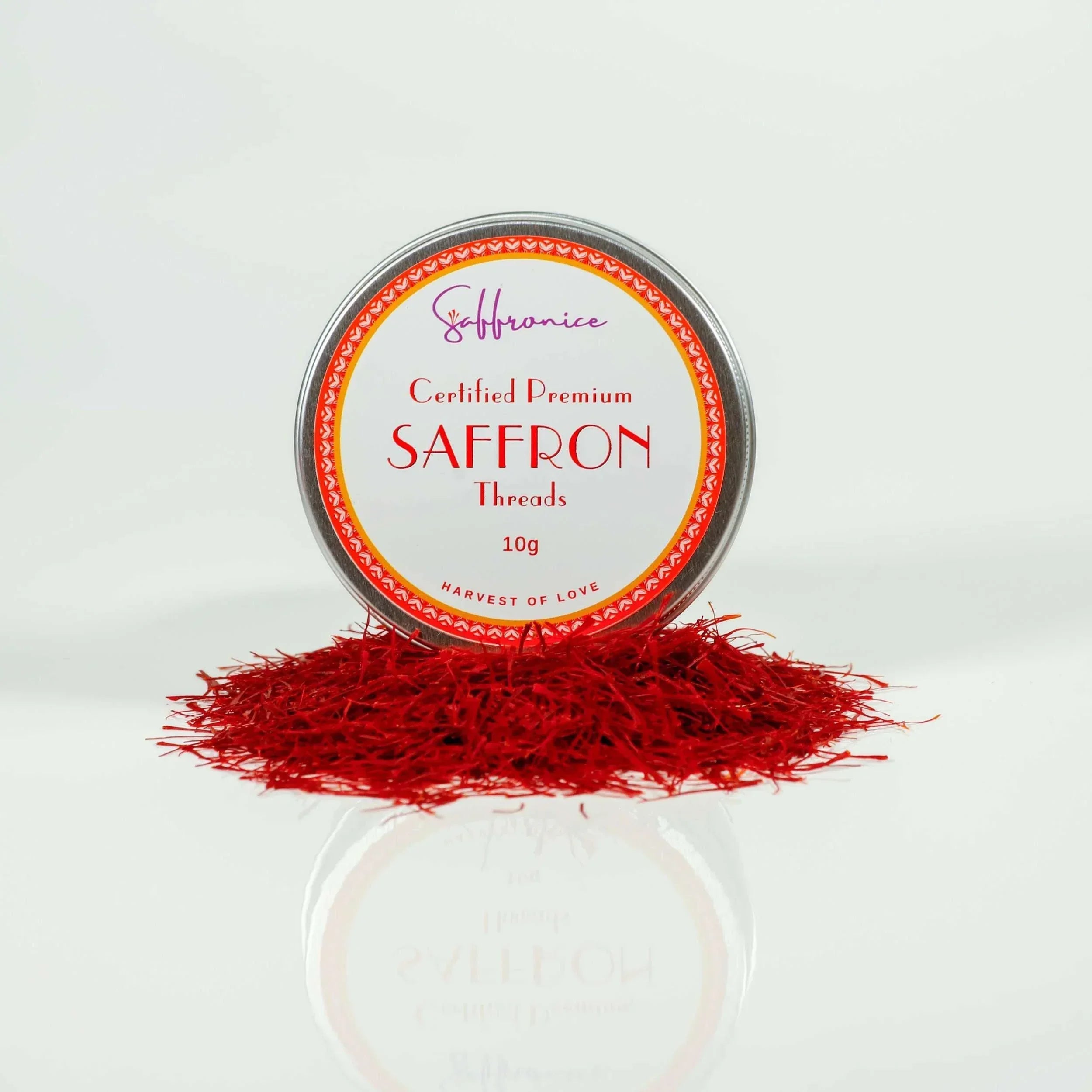Cooking with saffron is a delightful way to elevate your culinary skills, bringing a touch of luxury and sophistication to your dishes. Derived from the Crocus sativus flower, saffron is renowned for its rich history and significance in various culinary traditions around the world. Known as one of the most expensive spices, its unique flavor profile and vibrant golden hue make it a cherished ingredient in many kitchens.
In this article, we'll explore an array of dishes and cuisines that showcase the versatility of saffron:
- Mediterranean delights like paella and risotto Milanese
- Savory creations such as seafood dishes and hearty soups
- Sweet treats including saffron-infused milk and ice cream
- Global rice recipes from Persian baked saffron rice to others
- Baked goods featuring unique saffron-inspired cakes and bread rolls
- Refreshing beverages like traditional saffron tea
By understanding how to effectively use this precious spice, you can unlock new dimensions of flavor in your cooking. Dive into the world of saffron and discover how it can transform your culinary creations into extraordinary experiences.

Understanding Saffron
Flavor Profile
Saffron is known for its distinctive flavor, which is a combination of sweetness and earthiness. It adds a rich and intricate taste to both savory and sweet dishes. The spice also has a pleasant smell that carries hints of flowers and honey, making it suitable for a wide range of recipes.
Health Benefits
Adding saffron to your meals can provide several health advantages. Here are some of the benefits it may offer:
- Nausea relief: Saffron has natural properties that can help reduce feelings of nausea, making it useful for digestive problems.
- Mood improvement: Research suggests that saffron might be effective in reducing symptoms of depression and boosting overall mood.
- Inflammation reduction: The spice contains powerful antioxidants that have the potential to lower inflammation levels in the body and promote general well-being.
Tips for Purchasing Quality Saffron
When buying saffron, it's important to choose high-quality products to ensure you get the best flavor and benefits:
- Opt for whole threads: Always go for whole saffron threads instead of powdered versions. Powdered saffron can sometimes contain additives or fillers, which can diminish its strength and purity.
- Check the color and smell: Look for saffron threads that are deep red with a slight orange tint at the ends. They should also have a strong and pleasant fragrance.
- Know the source: Reputable sources such as Iran, Kashmir, and southern Spain are known for producing top-notch saffron.
By being aware of these factors, you can make better choices when buying and using this valuable spice in your cooking.

Cooking with Saffron
Cooking with saffron can truly elevate your dishes, but understanding how to properly use this precious spice is key. The most crucial step in harnessing saffron's full potential is steeping the threads in warm water or broth before adding them to your recipe. This process, known as activating saffron flavors, allows the spice to release its vibrant color and unique taste.
Techniques for Incorporating Saffron into Various Dishes
- Steeping Method:
- Crush a small amount of saffron threads using a mortar and pestle.
- Place the crushed threads in a small amount of hot water or broth (around ¼ cup).
- Let it steep for at least 10-15 minutes before adding the liquid to your dish.
- Direct Addition:
- For dishes that require slow cooking, like soups and stews, you can add whole saffron threads directly. The prolonged cooking time will naturally release the flavors.
- Infusion Technique:
- For desserts or beverages, infuse saffron in warm milk or cream to incorporate its essence seamlessly.
- Dry Roasting:
- Lightly dry roast the saffron threads in a pan before crushing and steeping them. This method can intensify the flavor and aroma.
Using these techniques ensures that every dish benefits from saffron’s aromatic qualities and striking hue, making it an unforgettable culinary experience.
Best Practices for Using Saffron
Storing Saffron
To maintain the potency and vibrant color of saffron, proper storage is essential. Here are some tips:
- Store in an airtight container: Use a small glass jar or a metal tin to protect saffron from air exposure.
- Keep away from light: Store the container in a cool, dark place such as a pantry or a cupboard. Exposure to light can degrade the quality of saffron over time.
- Avoid moisture: Ensure the container is completely dry before placing saffron threads inside, as moisture can lead to mold growth and spoilage.
How Much Saffron to Use in Recipes
When cooking with saffron, using the correct amount is crucial to achieving the desired flavor and color without overwhelming your dish. Here's a handy guide for measuring saffron:
- Rice dishes: For dishes like paella or biryani, use about 1/4 teaspoon of saffron threads (approximately 15-20 threads) for every cup of uncooked rice.
- Soups and stews: A pinch (5-10 threads) is usually sufficient for enhancing the flavor of a pot of soup or stew.
- Desserts: For sweet treats like custards or ice creams, 1/8 teaspoon (around 10 threads) will provide a subtle yet distinct saffron flavor.
Note: It's always best to start with a smaller amount and adjust according to taste, as saffron's potency can vary depending on its source and freshness.
By following these best practices, you can ensure that your dishes are infused with the rich, unique flavor that only high-quality saffron can provide.

Saffron in Mediterranean Cooking
Saffron holds a prestigious place in the culinary traditions of the Mediterranean region. Its distinct flavor and vibrant color elevate a variety of dishes, turning them into gourmet experiences.
Role of Saffron in Traditional Mediterranean Cuisines
- Spanish Paella: This iconic dish beautifully showcases the essence of saffron. The saffron threads are infused in hot broth, which is then combined with rice, seafood, and meats to create a rich and aromatic one-pan meal.
- Italian Risotto Milanese: Equally famous, this creamy risotto relies on saffron to achieve its luxurious golden hue and subtle earthy notes. The process involves slowly cooking Arborio rice with saffron-infused broth until it reaches the perfect creamy consistency.
These examples illustrate how integral saffron is to Mediterranean cooking, adding depth and sophistication to both everyday meals and festive occasions.
Sweet and Savory Dishes with Saffron
Saffron's unique flavor makes it a star ingredient in both sweet and savory dishes, adding elegance and complexity to any meal.
Savory Dishes
1. Saffron in Seafood Dishes
The delicate, yet distinct flavor of saffron pairs beautifully with seafood. A classic example is Bouillabaisse, a traditional Provençal fish stew where saffron adds depth and richness. Another favorite is Spanish Paella, which combines saffron with seafood like shrimp, clams, and mussels, creating a vibrant and flavorful dish.
2. Vegetarian Dishes with Saffron
Saffron also shines in vegetarian recipes. Saffron-infused Vegetable Stew combines root vegetables, chickpeas, and tomatoes, all enhanced by the earthy tones of saffron. Another delightful option is Saffron Risotto, where the spice imparts its golden hue and subtle sweetness to the creamy rice.
Sweet Dishes
1. Desserts
Saffron's versatility extends to the realm of sweets. In Indian cuisine, Saffron Milk or Kesar Doodh is a popular dessert drink made by infusing milk with saffron threads and sugar. This luxurious beverage is often garnished with chopped nuts for added texture.
2. Ice Cream
Saffron-Orange Ice Cream is another delightful treat where saffron’s floral notes complement the citrusy brightness of orange. This combination creates an indulgent dessert that is both refreshing and aromatic.
These examples show how saffron can enhance both sweet and savory dishes, making it a beloved ingredient in various culinary traditions.
Saffron Rice Recipes from Around the World
Saffron rice is a culinary treasure found in various cultures, each adding its unique twist to this beloved dish. The easy saffron rice recipe often begins with a basic set of ingredients: rice, saffron threads, water or broth, and seasonings. Yet, the magic lies in the regional adaptations.
Persian Baked Saffron Rice (Tahdig)
Persian cuisine offers Tahdig, a baked saffron rice renowned for its crispy golden crust. This dish typically involves parboiling rice, mixing it with yogurt and saffron-infused water, and then baking it to create a beautiful crust at the bottom.
Spanish Paella
In Spain, saffron is a key ingredient in paella, where it combines with seafood, chicken, and vegetables over a bed of short-grain rice. The saffron imparts a vibrant yellow color and a depth of flavor that defines this national dish.
Indian Biryani
India's rich culinary tradition features biryani, which uses saffron to flavor layers of basmati rice mixed with marinated meat or vegetables. The result is an aromatic, colorful dish that's both festive and deeply comforting.
Middle Eastern Pilaf
Middle Eastern pilaf incorporates saffron into a medley of spices and nuts. This dish often includes toasted almonds or pistachios and dried fruits like raisins or apricots, creating a delightful balance of sweet and savory notes.
These saffron rice recipes from around the world showcase the spice's versatility and ability to elevate even simple ingredients into something extraordinary. Whether you're making Persian Tahdig or Spanish Paella, cooking with saffron promises a flavorful journey through global cuisines.

Baking with Saffron
Saffron is a luxurious spice that can elevate your baking game. By incorporating saffron into your recipes, you can turn ordinary baked goods into extraordinary treats. Not only does saffron add a unique flavor profile, but it also imparts a beautiful golden color to your creations.
Unique Ways to Incorporate Saffron in Baking
Here are some creative ways to use saffron in your baking:
1. Saffron Cakes
Give your favorite cake recipes a twist by infusing them with saffron. Simply steep the threads in warm milk or water and add this mixture to your batter. Picture a light and fluffy sponge cake with a hint of saffron fragrance—perfect for celebrations.
2. Bread Rolls
Take plain bread rolls up a notch by adding saffron. Similar to cakes, steep the saffron threads and mix the infusion into your dough. The outcome? Fragrant, golden rolls that pair beautifully with savory dishes.
3. Pastries
Indulge in luxury by enhancing pastries like croissants or Danish pastries with saffron. Before baking, brush them with a syrup made from saffron infusion. This technique not only intensifies the flavor but also gives the final product an irresistible shine.
Tips for Success
To make the most of your saffron-infused baked goods, keep these tips in mind:
- Ensure even distribution of flavor by properly steeping and dissolving the threads before incorporating them into your batter or dough.
- Experiment with complementary ingredients such as almonds, cardamom, and citrus—saffron pairs exceptionally well with these flavors.
Example Recipe: Saffron Almond Cake
Here's a simple yet elegant recipe that showcases how baking with saffron can elevate traditional desserts:
Ingredients
- 1 cup almond flour
- 1/2 cup all-purpose flour
- 1/2 teaspoon baking powder
- Pinch of salt
- 1/4 teaspoon saffron threads
- 2 tablespoons warm milk
- 3/4 cup sugar
- 3 large eggs
- 1/2 cup melted butter
Instructions
- Preheat your oven to 350°F (175°C) and grease a cake pan.
- In a bowl, combine almond flour, all-purpose flour, baking powder, and salt.
- Steep the saffron threads in warm milk for about 10 minutes.
- In another bowl, beat together sugar and eggs until fluffy; then add melted butter and the saffron milk.
- Gradually fold in the dry ingredients into the wet mixture.
- Pour the batter into the prepared pan and bake for approximately 30-35 minutes or until a toothpick comes out clean.
This delightful Saffron Almond Cake is proof that just a touch of saffron can transform an ordinary dessert into something truly special!
Saffron-infused Beverages: Tea Edition
Saffron tea is a delightful and aromatic beverage that not only warms your soul but also offers numerous health benefits. It's surprisingly easy to prepare, making it a perfect introduction for those new to saffron-infused beverages.
How to Make Saffron Tea
Ingredients:
- 4-5 saffron threads
- 1 cup of hot water
- 1 teaspoon honey (optional)
- A few cardamom pods (optional)
Method:
- Steep the Saffron: Place the saffron threads in a small bowl and pour a few tablespoons of hot water over them. Let it steep for about 5-10 minutes. This process helps release the vibrant color and unique flavor of the saffron.
- Boil Water: In the meantime, bring one cup of water to a boil. Once boiling, reduce heat and let it cool slightly so it's just under boiling point.
- Combine: Pour the steeped saffron (including the threads) into your cup of hot water. If you prefer a slightly sweetened tea, add honey at this stage. For an extra layer of flavor, you can also add a few lightly crushed cardamom pods.
- Stir and Serve: Stir well to mix all ingredients thoroughly. Allow the tea to sit for another minute or two before enjoying.
Health Benefits of Saffron Tea
Saffron tea isn't just tasty; it's also packed with health benefits:
- Digestive Aid: Saffron has been traditionally used to alleviate nausea and soothe digestive issues.
- Mood Enhancer: Some studies suggest that saffron can help improve mood and combat symptoms of depression.
- Antioxidant Properties: Rich in antioxidants, saffron can help fight oxidative stress in the body.
Enjoying a warm cup of saffron tea can be both a comforting ritual and a beneficial addition to your wellness routine. Whether you're looking for a soothing beverage or exploring the culinary versatility of saffron, this tea is an excellent place to start.
Saffron in Soups and Stews: A Flavorful Addition
Saffron in soups and stews recipes adds a touch of luxury and depth of flavor that is hard to match. Cooking with saffron can transform an ordinary dish into an extraordinary culinary experience.
Using Saffron in Soups
To incorporate saffron into your soups:
- Steep the Threads: Just like with other dishes, steep saffron threads in hot water or broth for about 10-15 minutes before adding them to your soup. This step ensures that the saffron's flavors and vibrant color are fully released.
- Blend with Broth: Add the saffron-infused liquid early in the cooking process. This allows the flavors to meld beautifully with other ingredients.
Popular soups that benefit from saffron include:
- Bouillabaisse: A traditional French fish stew where saffron's earthy notes complement the rich seafood flavors.
- Saffron Tomato Soup: A creamy tomato base elevated by the subtle sweetness of saffron.
Enhancing Stews with Saffron
For hearty stews:
- Even Distribution: Mix the steeped saffron liquid well into the broth to ensure even distribution.
- Complementary Ingredients: Pair saffron with ingredients like chicken, lamb, or vegetables that can absorb and highlight its unique taste.
Notable stews featuring saffron include:
- Spanish Seafood Stew (Zarzuela): This dish showcases how saffron pairs perfectly with a variety of seafood.
- Moroccan Lamb Tagine: A slow-cooked stew where saffron's flavor interweaves with spices like cumin and cinnamon.
By following these tips, you can masterfully use saffron in soups and stews, creating dishes that are not only comforting but also delightfully aromatic and flavorful.
FAQs (Frequently Asked Questions)
What is saffron and why is it significant in culinary traditions?
Saffron, derived from the flower Crocus sativus, is a highly prized spice known for its unique flavor and vibrant color. It holds significant importance in various culinary traditions around the world, enhancing dishes with its slightly sweet and earthy taste.
What are the health benefits associated with saffron?
Saffron is known for several health benefits, including relief from nausea, potential mood enhancement, and antioxidant properties. Incorporating saffron into your diet may contribute to overall well-being.
How should I properly store saffron to maintain its potency?
To maintain the potency of saffron, it should be stored in an airtight container away from light, heat, and moisture. Keeping it in a cool, dark place will help preserve its flavor and aroma.
Can you give examples of dishes that use saffron in Mediterranean cooking?
In Mediterranean cooking, saffron plays a crucial role in traditional dishes such as Spanish paella and Italian risotto Milanese. These recipes highlight the spice's ability to enhance flavors and add a distinct color to meals.
How can I incorporate saffron into baked goods?
Saffron can be uniquely incorporated into baked goods by infusing it into liquids used in recipes, such as milk or water. This adds a subtle flavor and beautiful color to cakes, bread rolls, and other pastries.
What is the method for making saffron tea and its health benefits?
To make saffron tea, steep a few strands of saffron in hot water for about 10 minutes. This tea not only provides a soothing drink but also offers health benefits such as improved digestion and relaxation effects.


